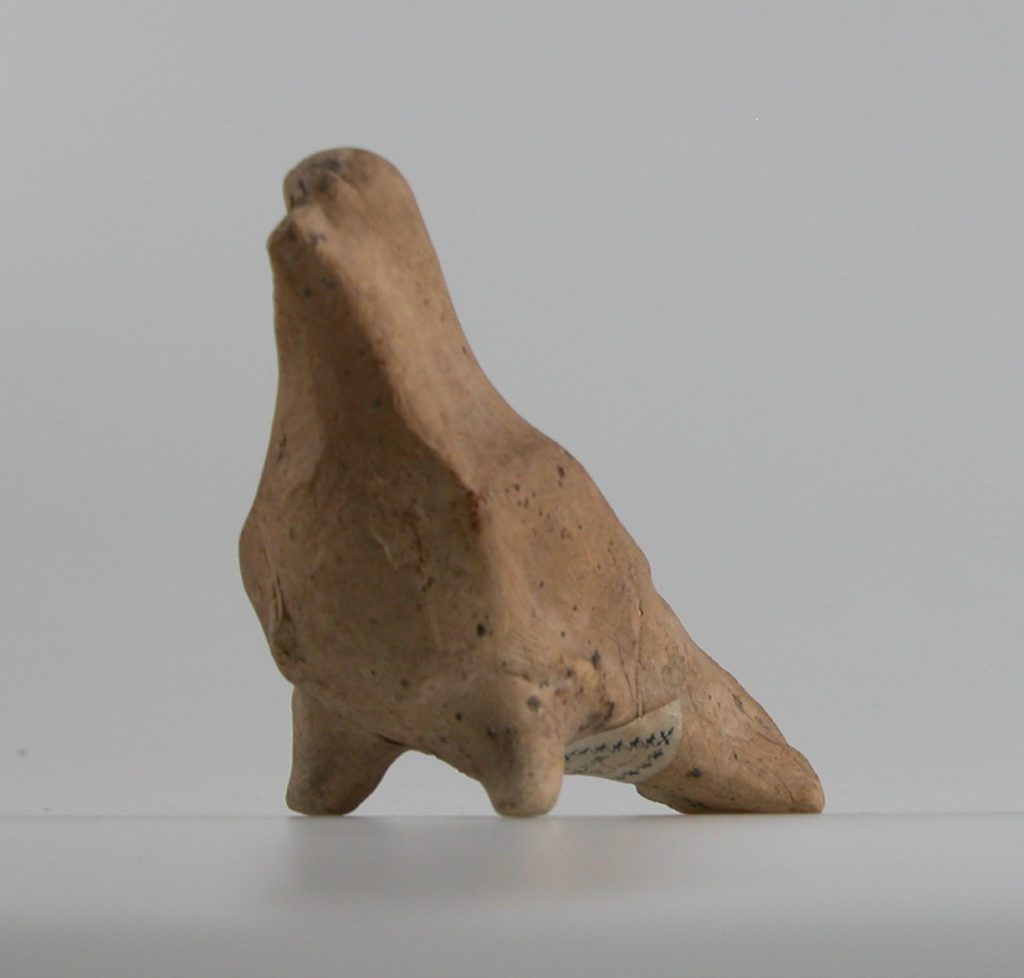
Bird or seal
Terracotta
Reference: 4196
Can be found: Explorers and Collectors
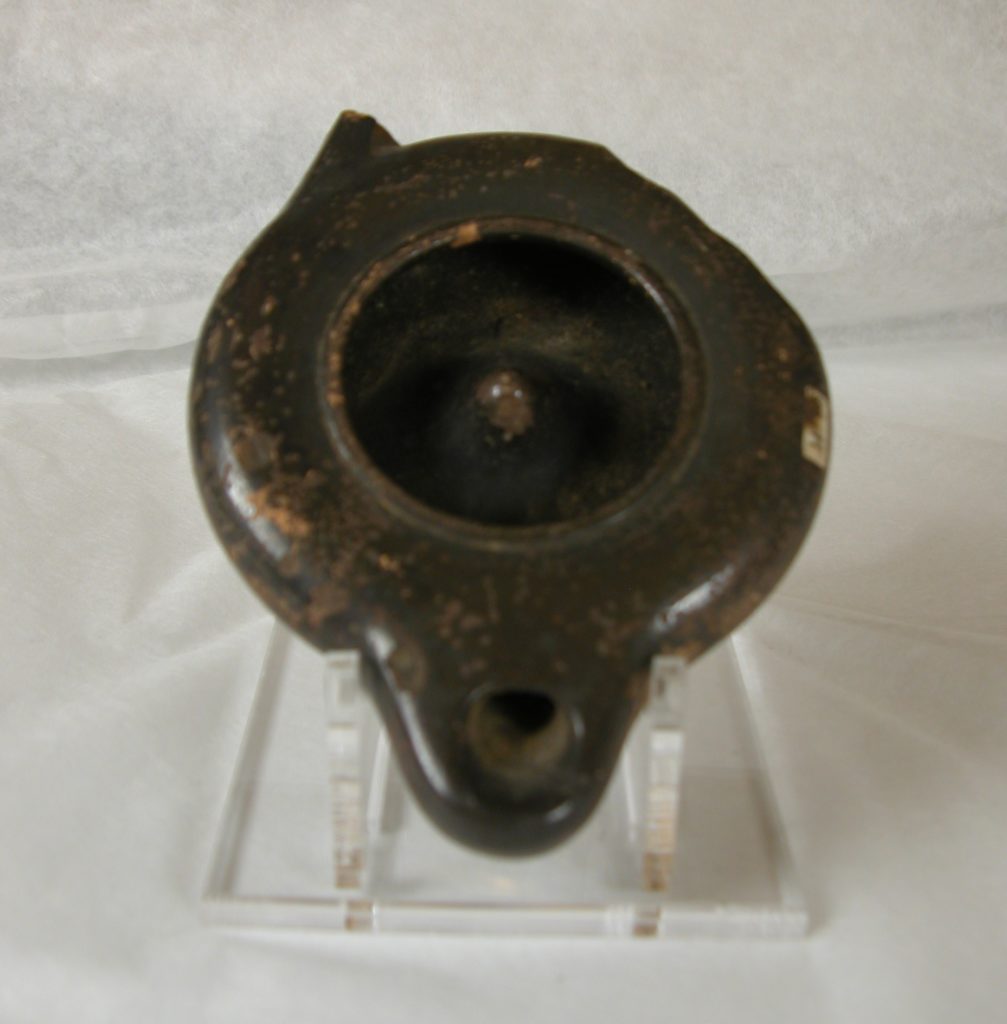
Black and red glazed lamp
Earthenware
Reference: 4233
Can be found: Explorers and Collectors
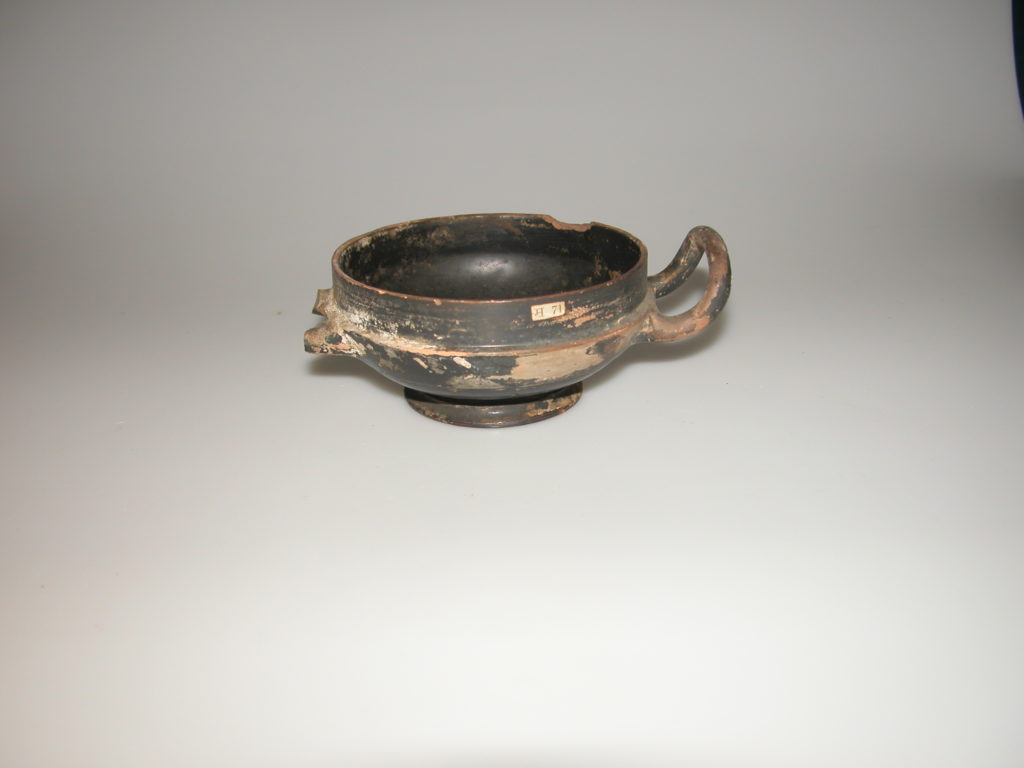
Black bowl
Reference: 4160
Can be found: Explorers and Collectors

Black two-handled pottery
5th to 1st century BC; found in Greece and Turkey
Earthenware
Cups for drinking wine or water, of a type called a skyphos.
Presented by Viscount Strangford to Canterbury Philosophical and Literary Institution Museum, 1844, and acquired through purchase of the museum by Canterbury Corporation, 1846-47
Reference: CANCM:nn
Can be found: Explorers and Collectors


Black two-handled vase of unusual shape
Found 1821
Reference: 4090
Can be found: Explorers and Collectors


Body of vase with band of Greek key pattern
From Megara, 1821
Reference: 4094
Can be found: Explorers and Collectors
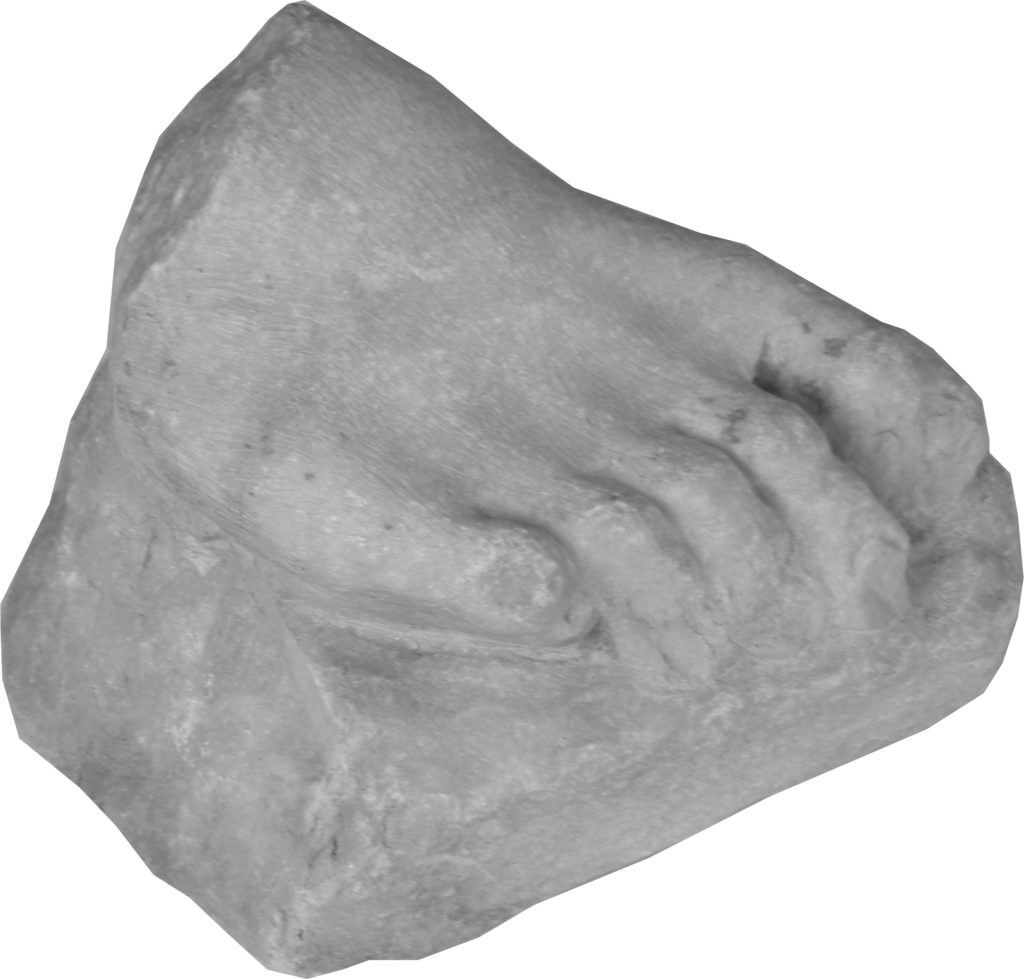

Carved foot
Found at Agrigentum, Sicily, in 1825 and bought by Strangford in St Petersburg.
Marble
Unknown date, probably Roman
Presented by Viscount Strangford to Canterbury Philosophical and Literary Institution Museum, 1844, and acquired through purchase of the museum by Canterbury Corporation, 1846-47
Reference: 4265
Can be found: Explorers and Collectors


Cosmetics container
Earthenware
Unknown date and source
The small round dishes inside this container had red iron oxide or ochre clays and charcoal mixed with olive oil for lip, cheek and eyebrow make-up.
Presented by Viscount Strangford to Canterbury Philosophical and Literary Institution Museum, 1844, and acquired through purchase of the museum by Canterbury Corporation, 1846-47
Reference: 1005
Can be found: Explorers and Collectors
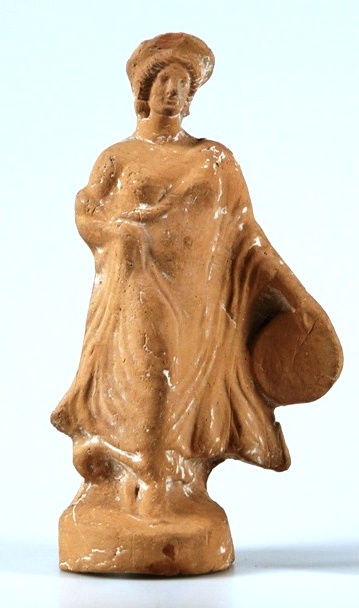

Draped female figure holding round instrument in left hand
Delos, 1823
Terracotta
Reference: 4183
Can be found: Explorers and Collectors
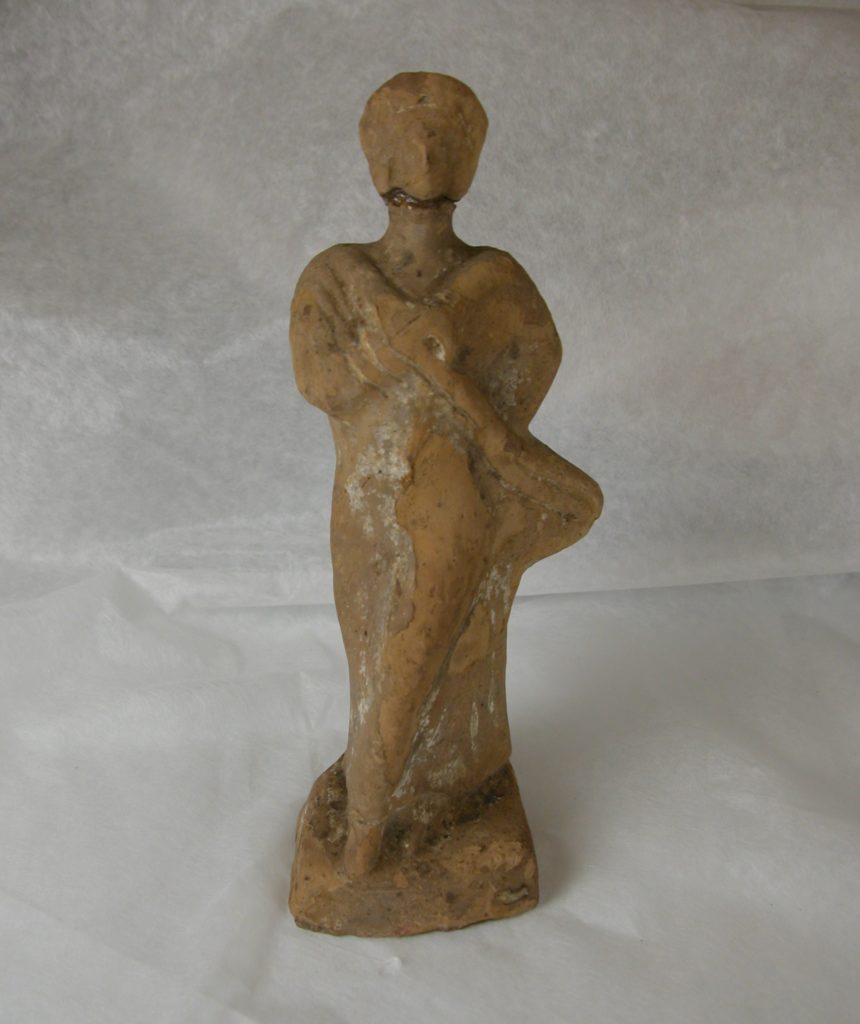

Female figure with flowing robe From Delos
Terracotta
Reference: 4178
Can be found: Explorers and Collectors
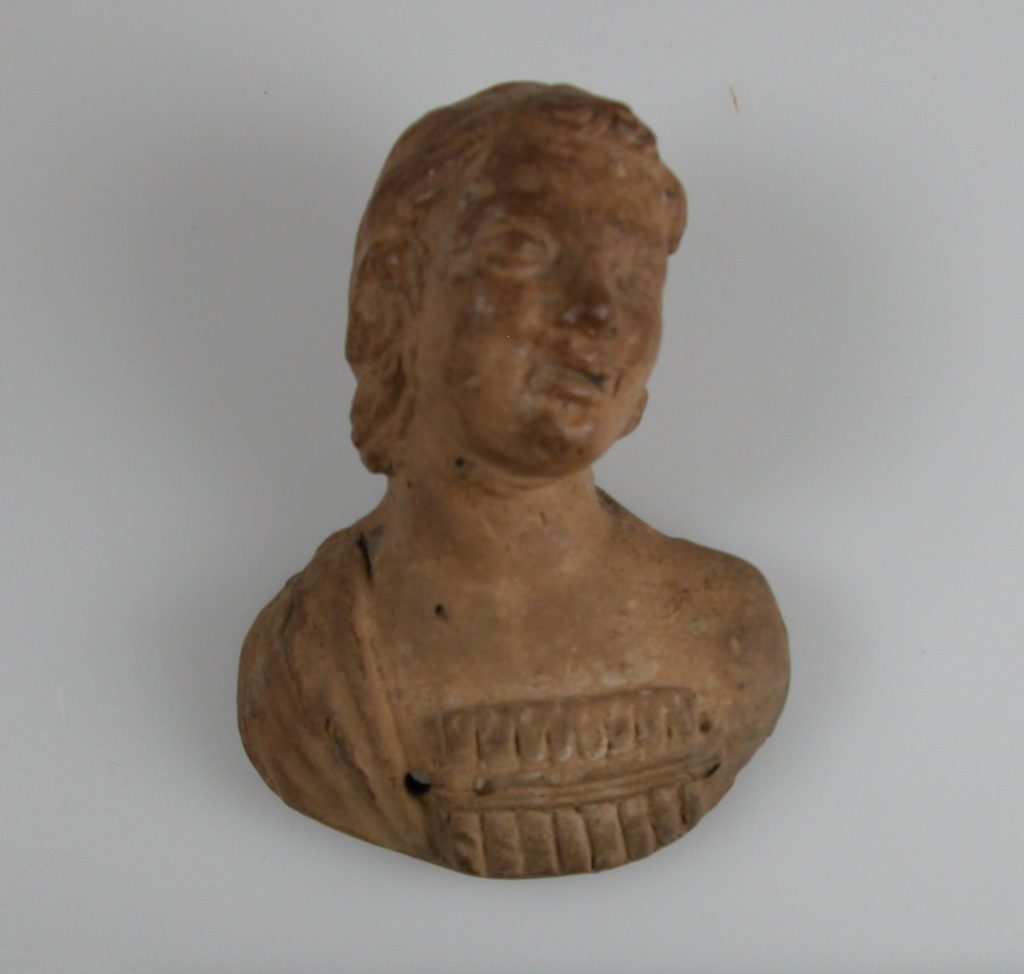

Female head
Terracotta
Reference: 4184
Can be found: Explorers and Collectors
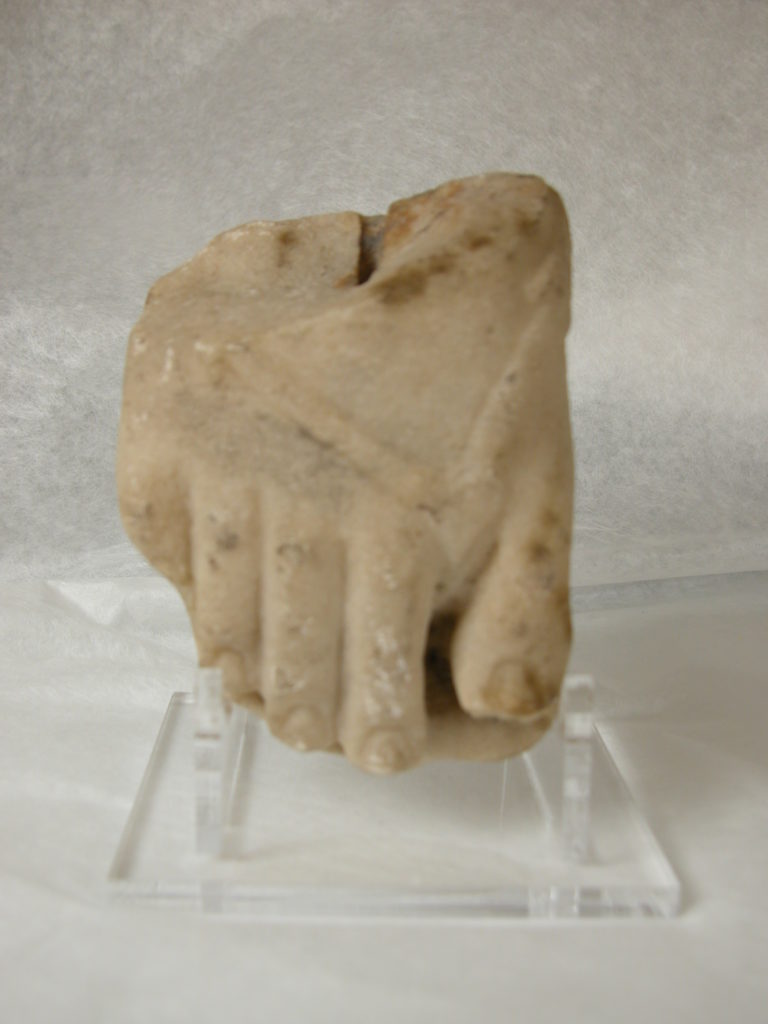

Foot with sandal strap
Found at Athens
Partial foot of a marble sculpture, with sandal thongs imitating creepers.
Reference: 4215
Can be found: Explorers and Collectors
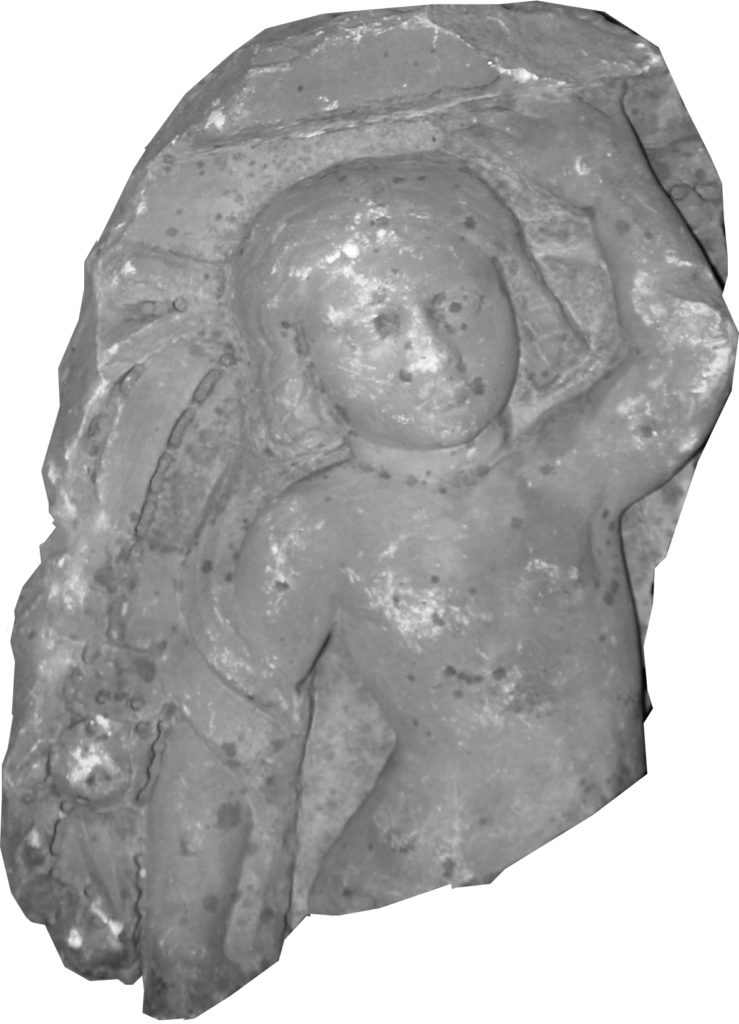

Fragment of a sculptured frieze Unknown date and source
Stone
Probably formed part of architectural decoration. The drilled holes create lines of shadow.
Presented by Viscount Strangford to Canterbury Philosophical and Literary Institution Museum, 1844, and acquired through purchase of the museum by Canterbury Corporation, 1846-47
Reference: 4250
Can be found: Explorers and Collectors
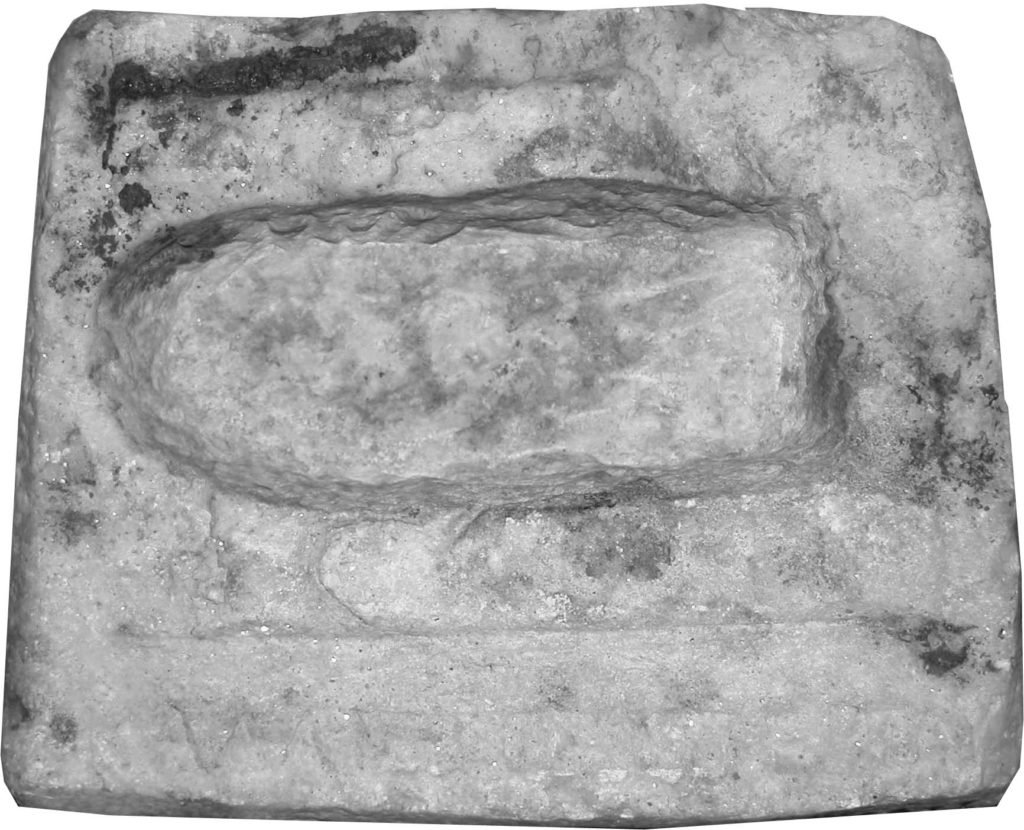

Fragment of a votive dedication 3rd to 1st century BC; from a shrine in Mysia, north west Turkey
Marble
Inscribed with a Greek dedication to local god Zeus Olbios.
Presented by Viscount Strangford to Canterbury Philosophical and Literary Institution Museum, 1844, and acquired through purchase of the museum by Canterbury Corporation, 1846-47
Reference: 4218
Can be found: Explorers and Collectors
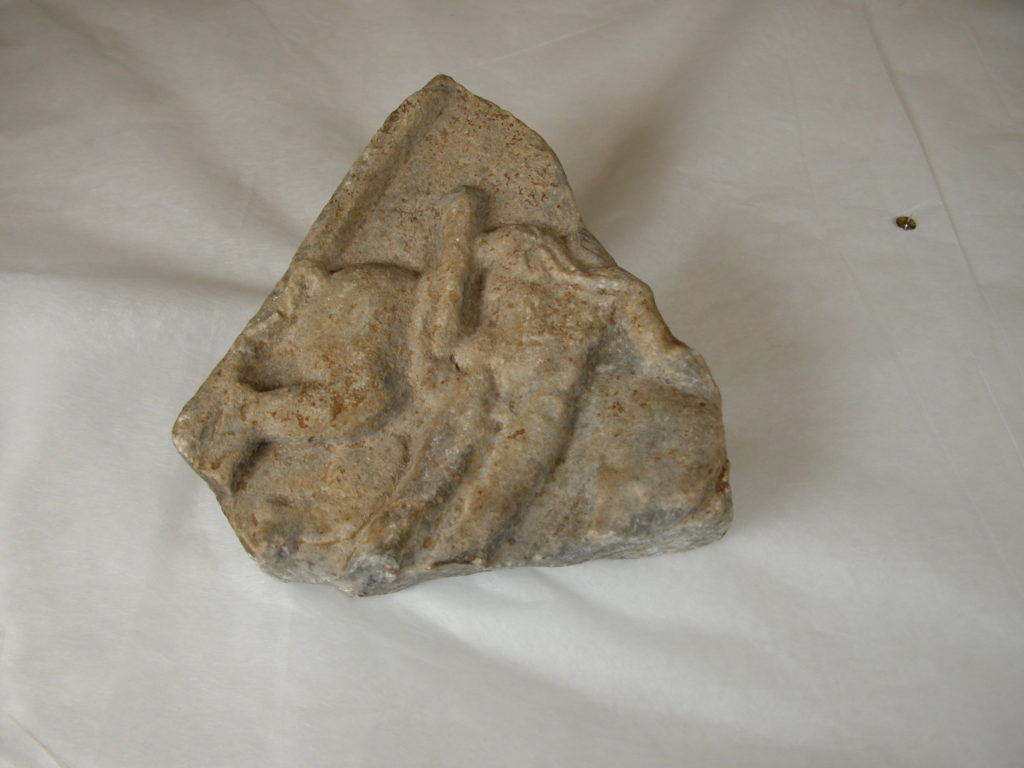

Fragmentary relief
Unknown date; found at Buyukdere, Istanbul, Turkey Stone
This fragment probably relates to the labours of Hercules.
Presented by Viscount Strangford to Canterbury Philosophical and Literary Institution Museum, 1844, and acquired through purchase of the museum by Canterbury Corporation, 1846-47
Reference: 4266
Can be found: Explorers and Collectors
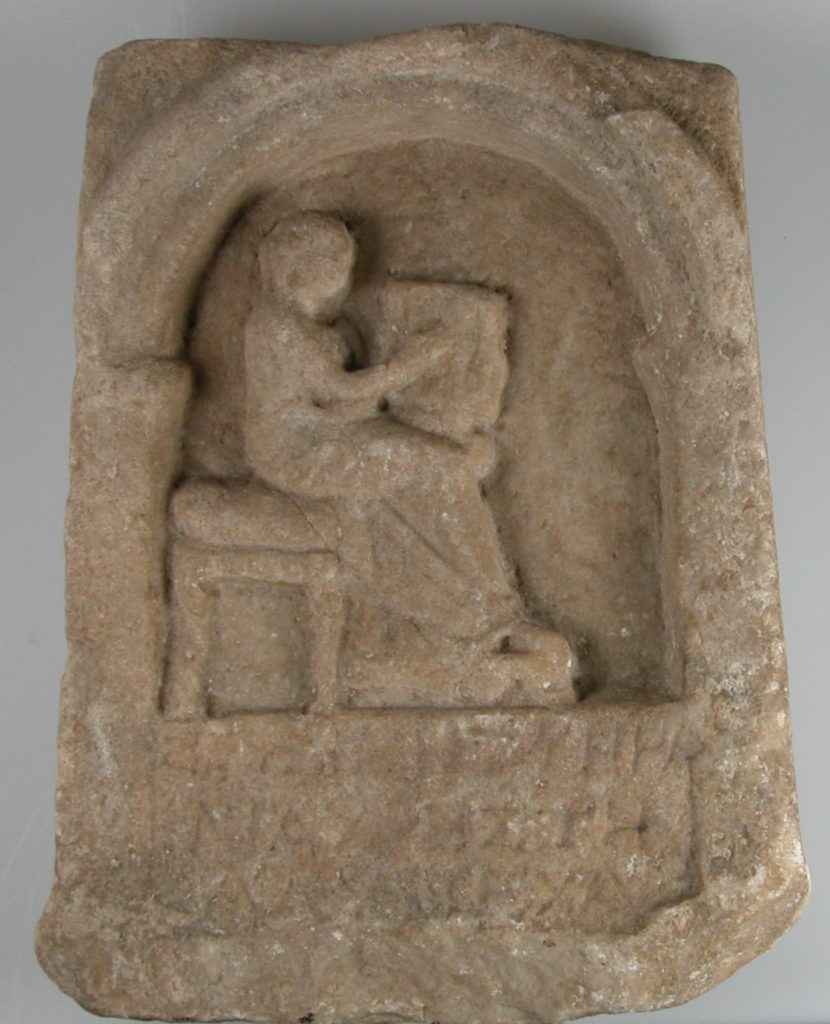

Funerary monument
Unknown date; found at Brusa (now Bursa) Turkey, 1823
Stone
The marble with a woman holding a lyre or harp is inscribed ‘Farewell to grieve no more, loved young and worthy Zosime’, a Greek female name.
Presented by Viscount Strangford to Canterbury Philosophical and Literary Institution Museum, 1844, and acquired through purchase of the museum by Canterbury Corporation, 1846-47
Reference: 4269
Can be found: Explorers and Collectors
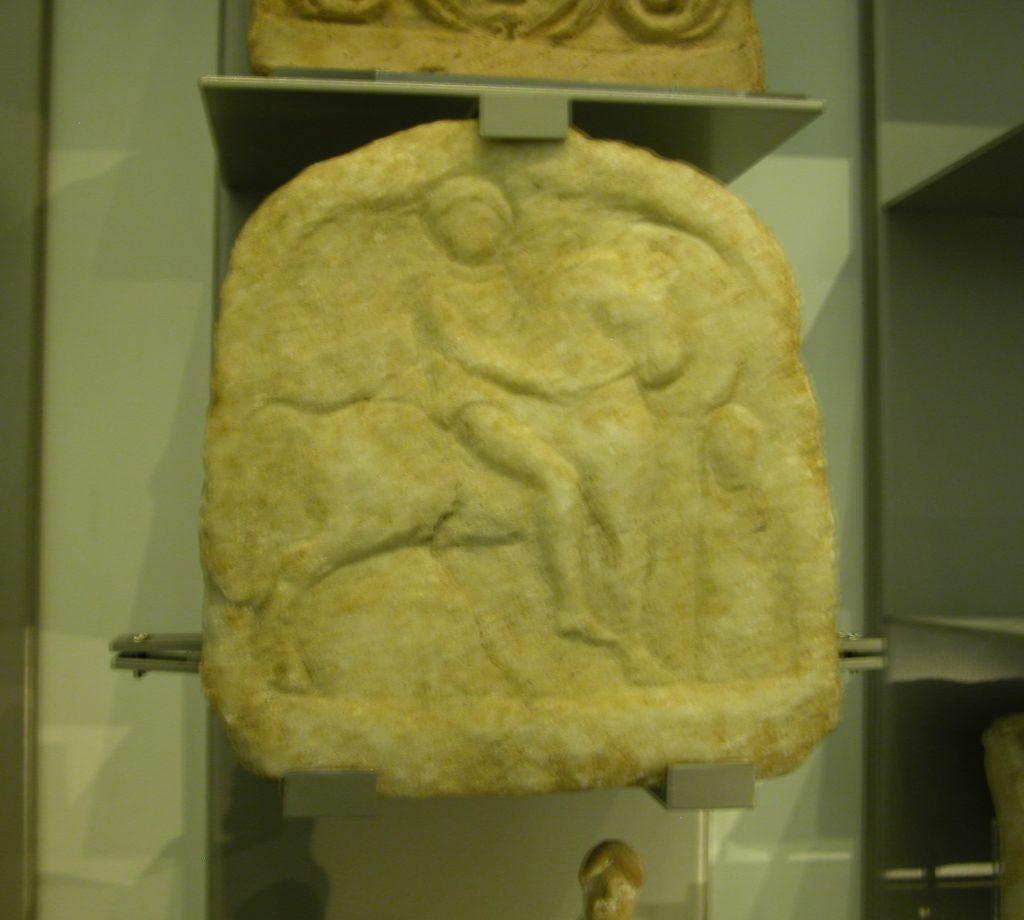

Funerary monument
Unknown date; probably found in Turkey
Stone
The fragment of votive stone with horse and rider is unidentified.
Presented by Viscount Strangford to Canterbury Philosophical and Literary Institution Museum, 1844, and acquired through purchase of the museum by Canterbury Corporation, 1846-47
Reference: 4219
Can be found: Explorers and Collectors


Funerary monument
Unknown date; found at Adrianople (modern Edirne), Turkey
Stone
The family scene shows a seated man and woman with attendants or family, including children, and a horse visible through a window.
Presented by Viscount Strangford to Canterbury Philosophical and Literary Institution Museum, 1844, and acquired through purchase of the museum by Canterbury Corporation, 1846-47
Reference: 4192
Can be found: Explorers and Collectors
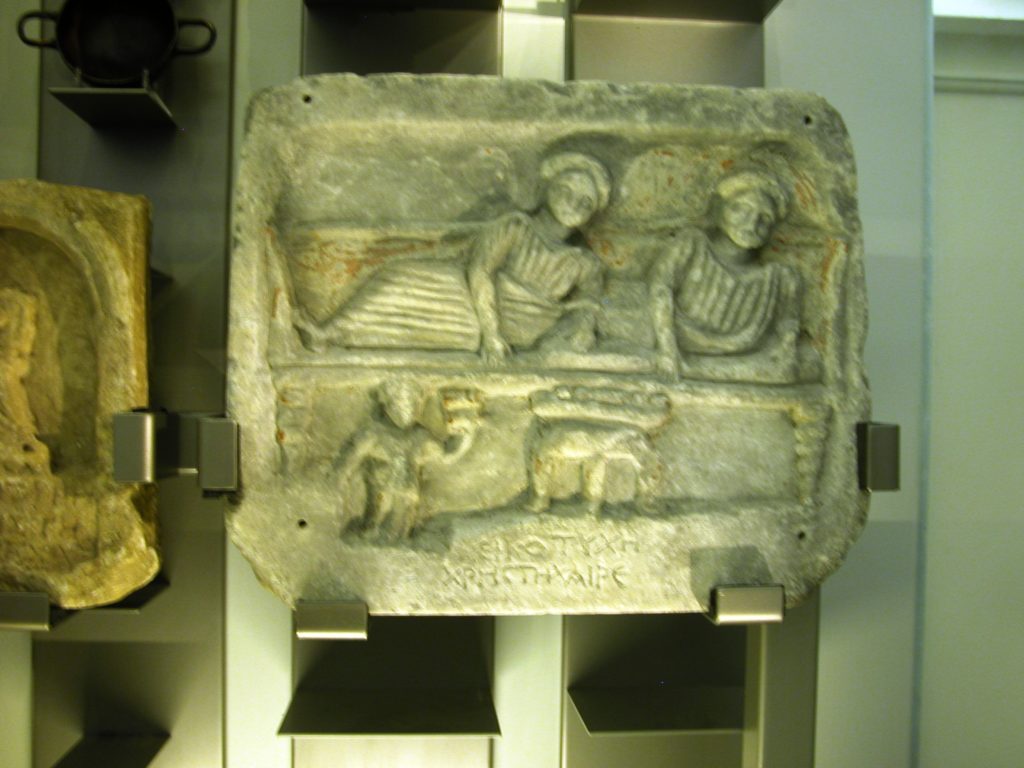

Funerary monument
Unknown date; probably found in Turkey
Stone
The gravestone with two figures reclining, a tripod table and servant in front of them, is inscribed ‘Farewell, worthy Nicotyche’.
Presented by Viscount Strangford to Canterbury Philosophical and Literary Institution Museum, 1844, and acquired through purchase of the museum by Canterbury Corporation, 1846-47
Reference: 4268
Can be found: Explorers and Collectors
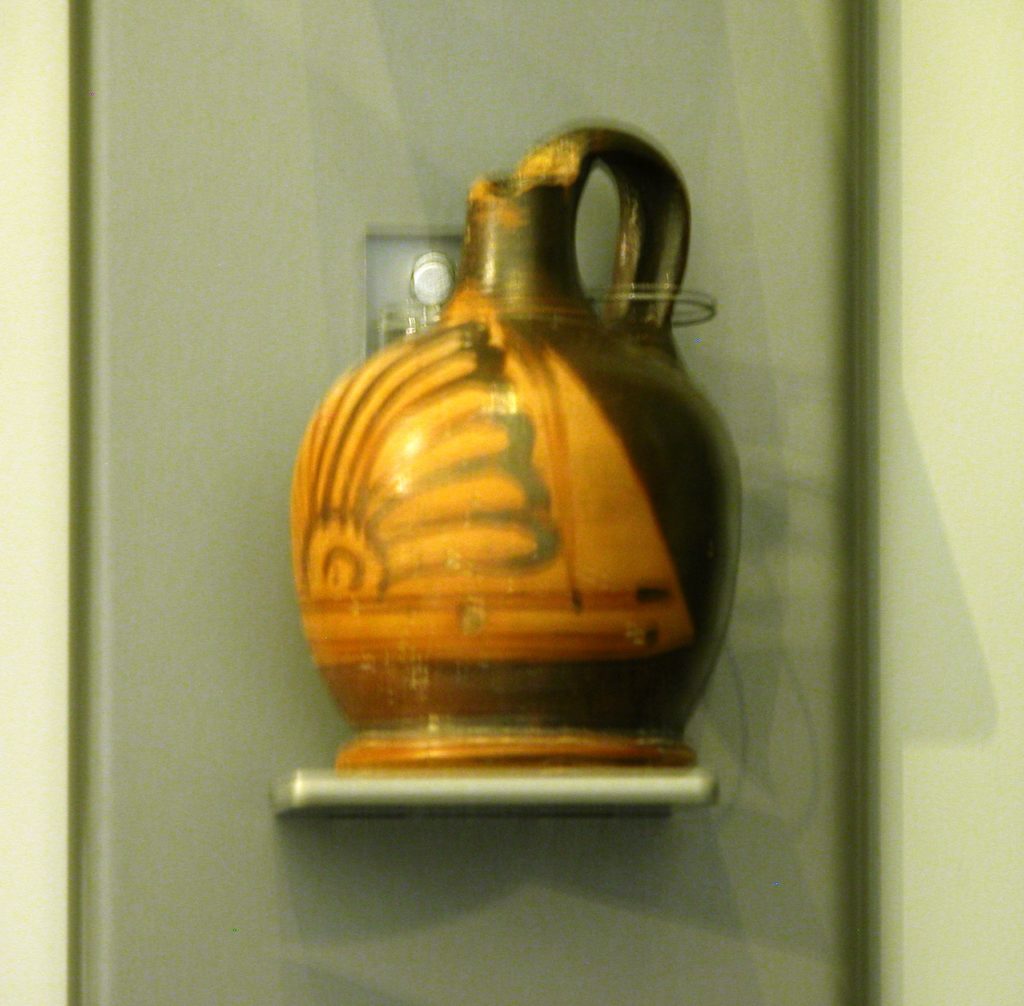

Globular vase with arabesque pattern
Reference: 4116
Can be found: Explorers and Collectors
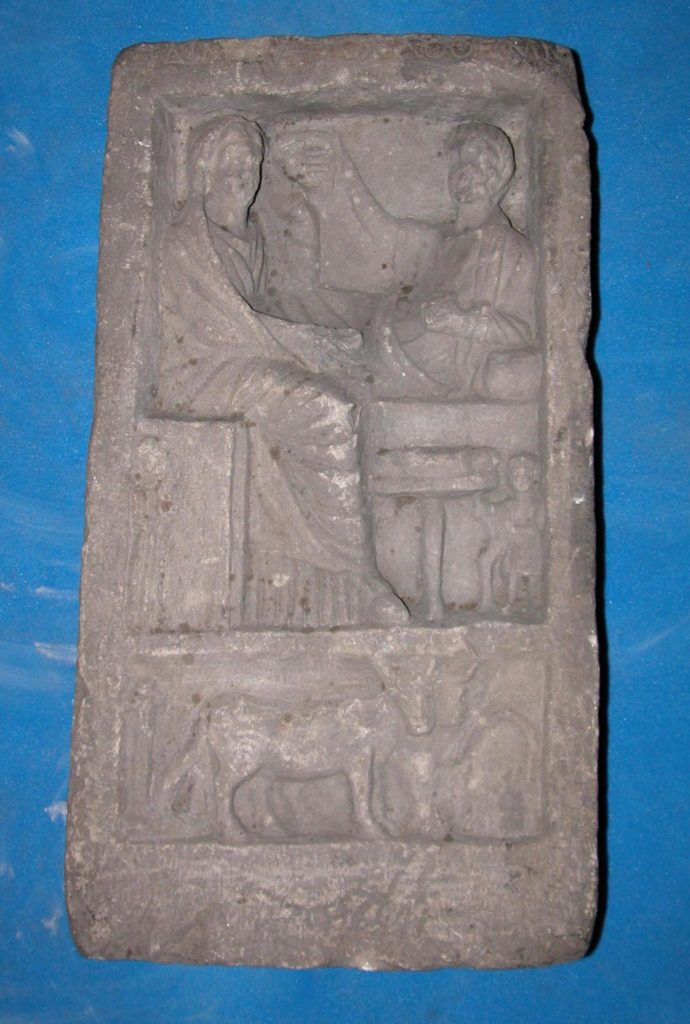

Gravestone
Unknown date; probably from Turkey
Stone
A tall gravestone inscribed ‘Farewell having received these delights, Pollothemis’. The deceased is shown sitting beside her husband, with servants, laid table, and oxen pulling a plough.
Presented by Viscount Strangford to Canterbury Philosophical and Literary Institution Museum, 1844, and acquired through purchase of the museum by Canterbury Corporation, 1846-47
Reference: 4270
Can be found: Explorers and Collectors


Hand with a scroll
Found at Adrianople (modern Edirne), Turkey
Marble
Reference: 4197
Can be found: Explorers and Collectors


Head of a woman with a garland
Marble
Reference: 4208
Can be found: Explorers and Collectors


Headless statue of a male
Unknown date, probably Roman
Stone
Presented by Viscount Strangford to Canterbury Philosophical and Literary Institution Museum, 1844, and acquired through purchase of the museum by Canterbury Corporation, 1846-47
Reference: 4261
Can be found: Explorers and Collectors
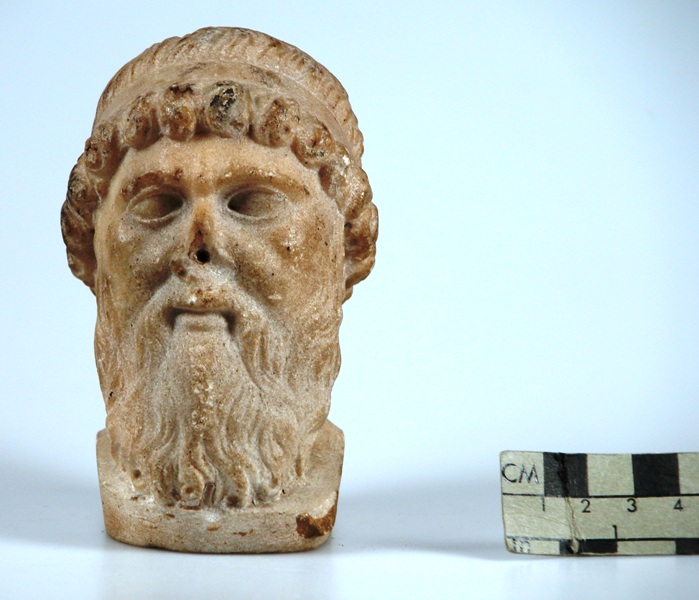

Ivy-crowned head of Bacchus Marble
Reference: 4194
Can be found: Explorers and Collectors
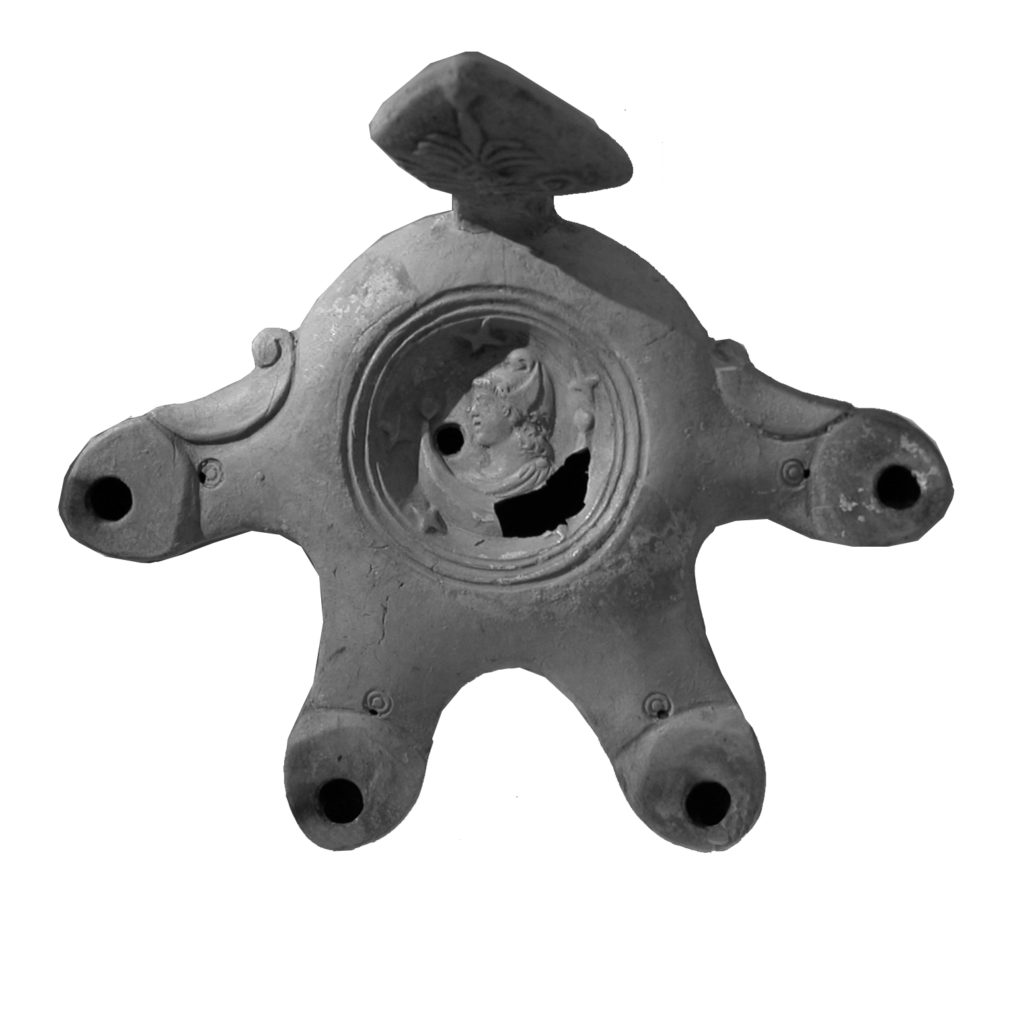

Lamp
4th to 2nd century BC Greek and 1st to 2nd century AD Roman
Earthenware
The round oil lamps were mass-produced in moulds with a variety of decoration. Oil was poured in through a central hole and wicks for light placed in the corner spouts.
Presented by Viscount Strangford to Canterbury Philosophical and Literary Institution Museum, 1844, and acquired through purchase of the museum by Canterbury Corporation, 1846-47
Reference: 993
Can be found: Explorers and Collectors
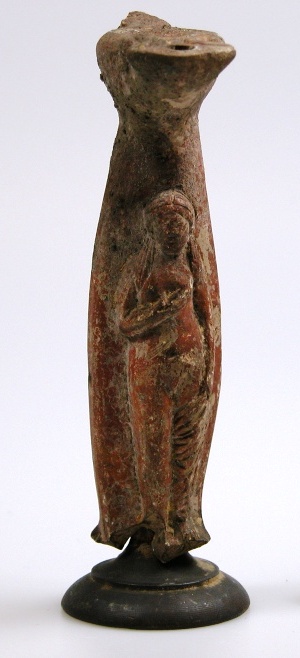

Lamp shaft in the form of a female holding her robe
Reference: 4193
Can be found: Explorers and Collectors
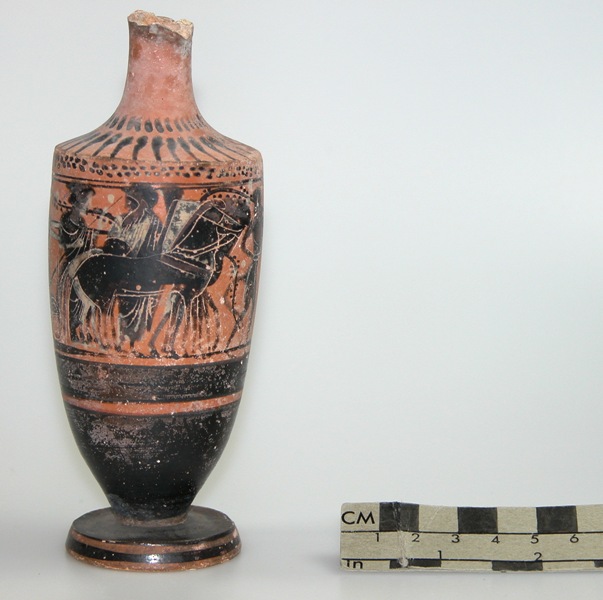

Lekythos
Black figure with a four-horse chariot with a draped female figure
Reference: 4153
Can be found: Explorers and Collectors
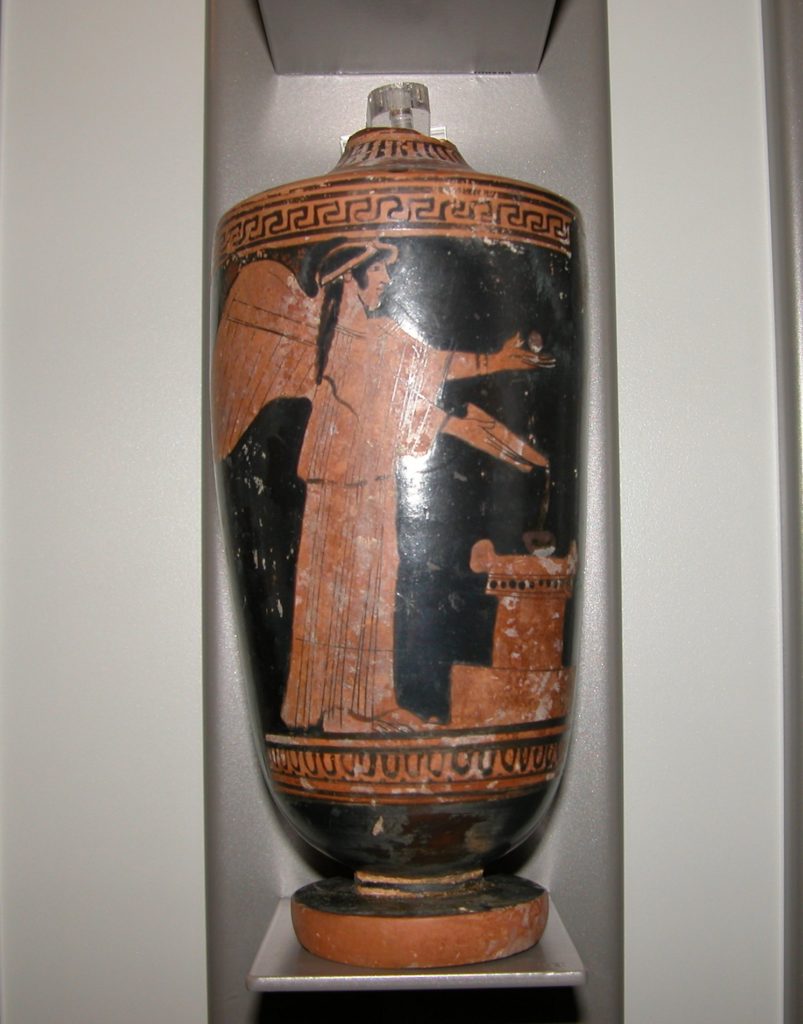

Lekythos
Red figure with Nike pouring at an altar [bits missng]
Reference: 4152
Can be found: Explorers and Collectors
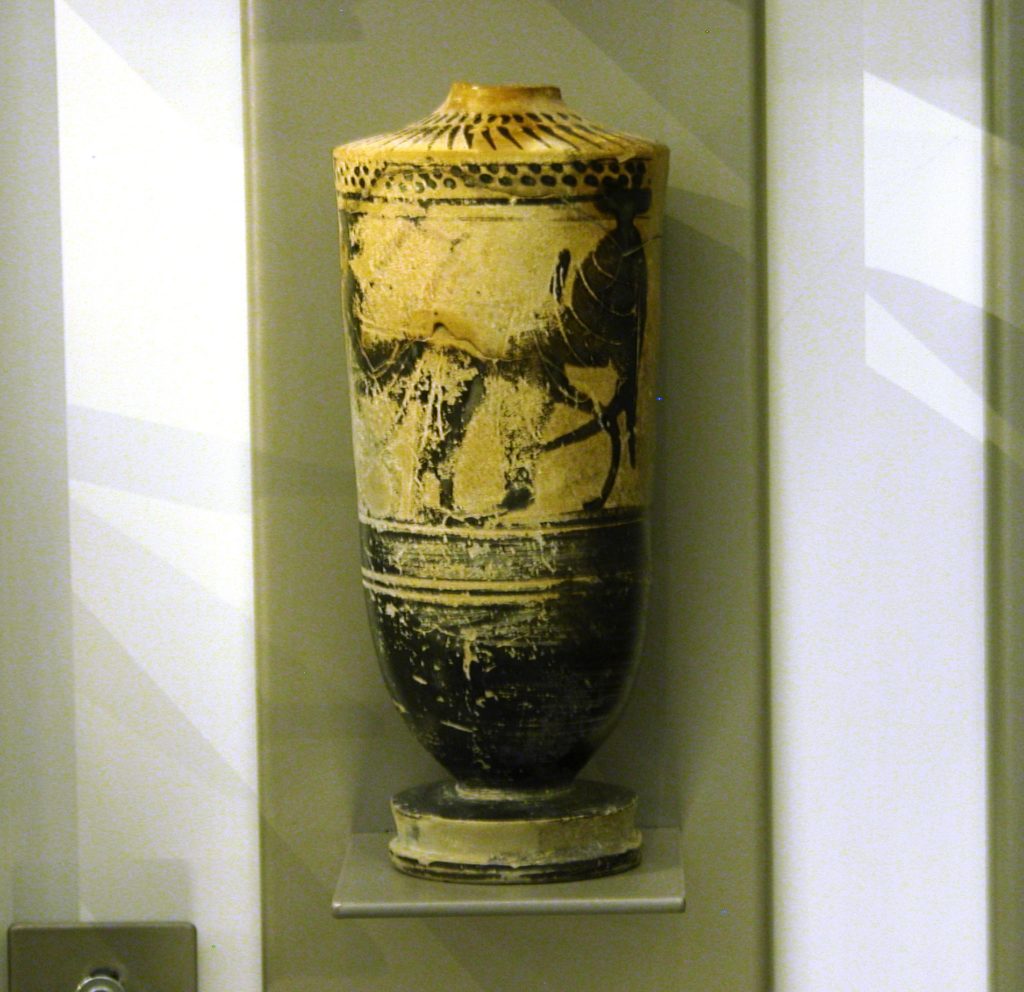



Lekythos
Reference: 4108
Can be found: Explorers and Collectors
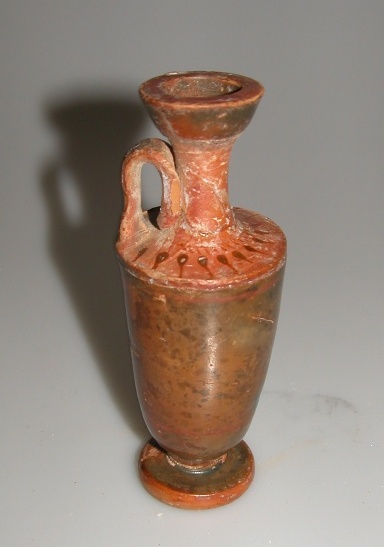

Lekythos
Reference: 4107
Can be found: Explorers and Collectors
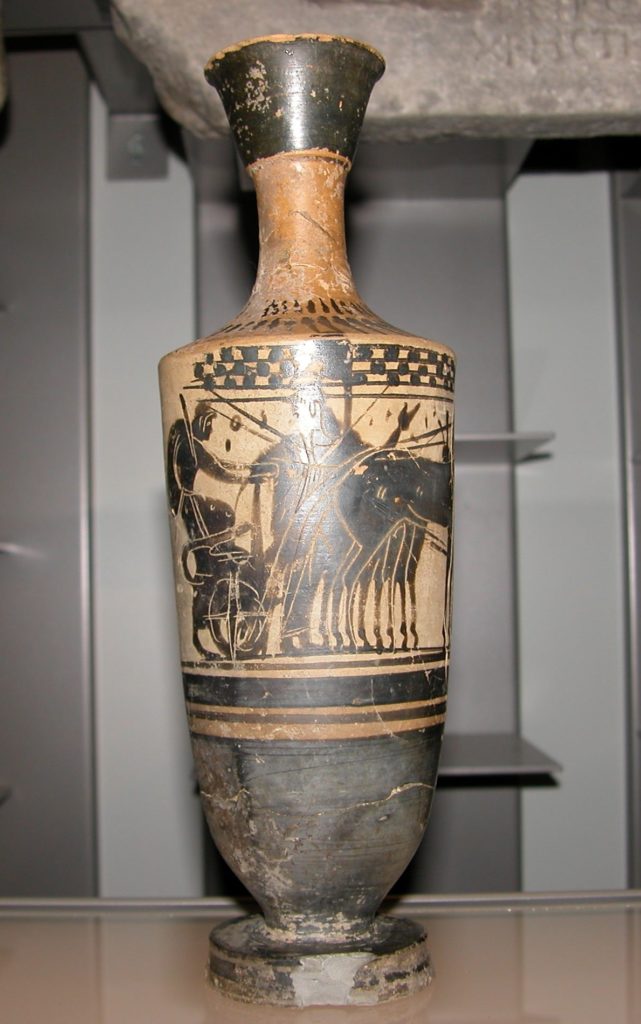

Lekythos
Charioteer driving a four-horse chariot
Reference: 4154
Can be found: Explorers and Collectors


Oil lamp with four burners
2nd century AD Roman, by a central Italian maker
Earthenware
By the same maker as the Odysseus lamp (both stamped CIVNBIT). The helmeted head surrounded by stars may represent Night.
Presented by Viscount Strangford to Canterbury Philosophical and Literary Institution Museum, 1844, and acquired through purchase of the museum by Canterbury Corporation, 1846-47
Reference: 993
Can be found: Explorers and Collectors


Oil lamp with image from the Odyssey Late 2nd century AD Roman, by a central Italian maker
Earthenware
An oil lamp of unusual square shape, made by Caius Innius Bitus, who stamped his initials, CIVNBIT, on the back.
The image shows a scene from the Odyssey, the Greek epic poem by Homer. Odysseus (whom Romans called Ulysses) is sailing through dangerous waters off the coast of Ithaca, where Sirens lure mariners to their deaths on the rocks. He has put wax in the ears of his crew, so they don’t hear the Sirens, and has tied himself to the ship’s mast, to prevent the Sirens’ call from making him throw himself into the sea.
Presented by Viscount Strangford to Canterbury Philosophical and Literary Institution Museum, 1844, and acquired through purchase of the museum by Canterbury Corporation, 1846-47
Reference: 994
Can be found: Explorers and Collectors
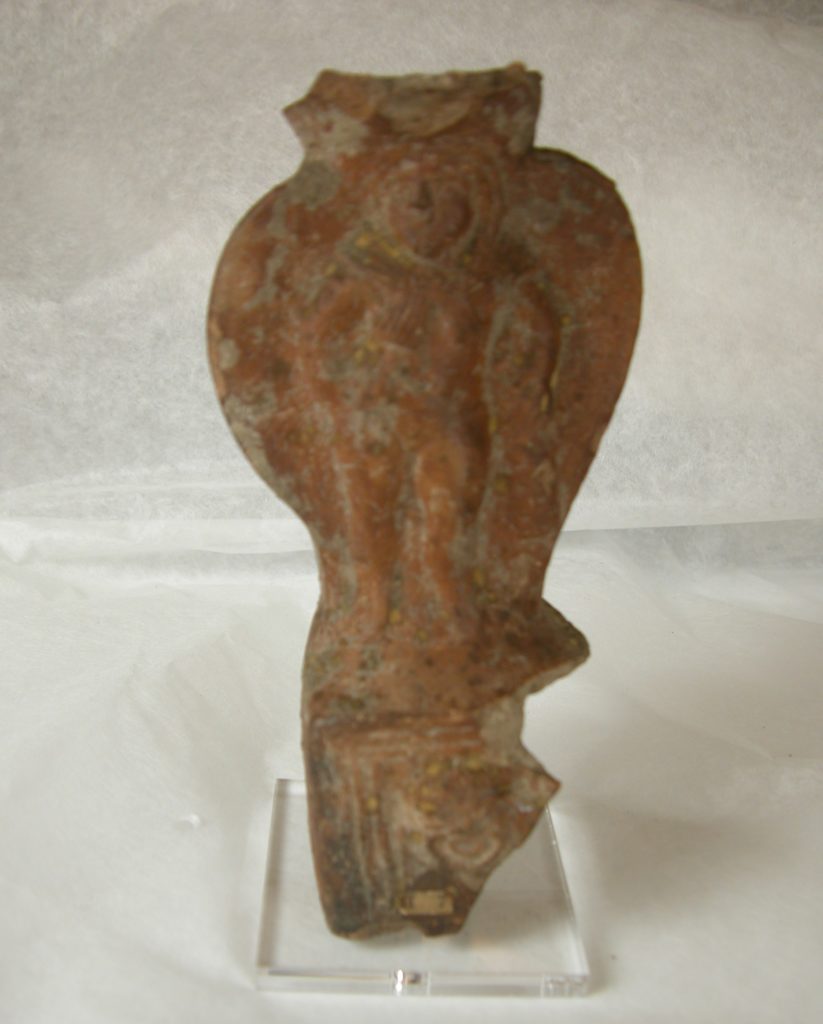

Pedestal with a relief of a boy leaning against a tree
Reference: 4187
Can be found: Explorers and Collectors
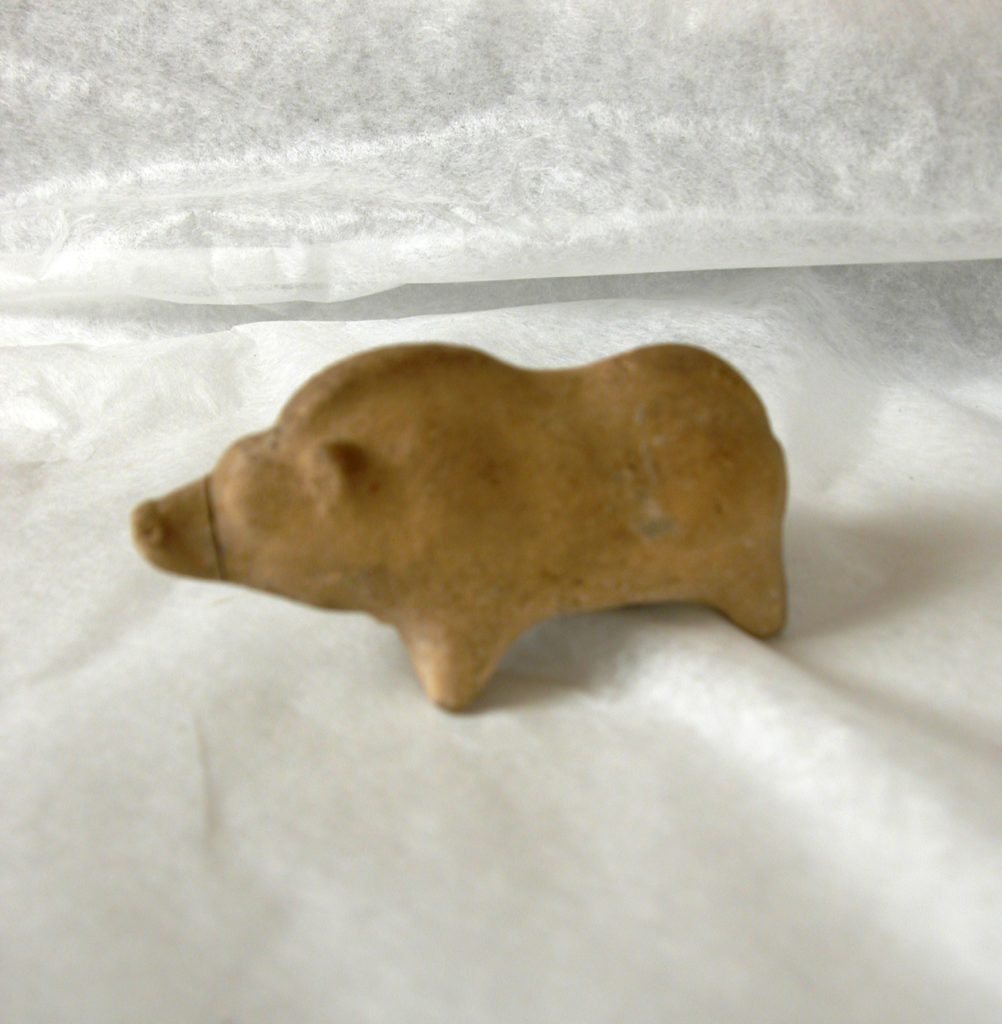

Pig or other animal
Terracotta
Reference: 1007
Can be found: Explorers and Collectors
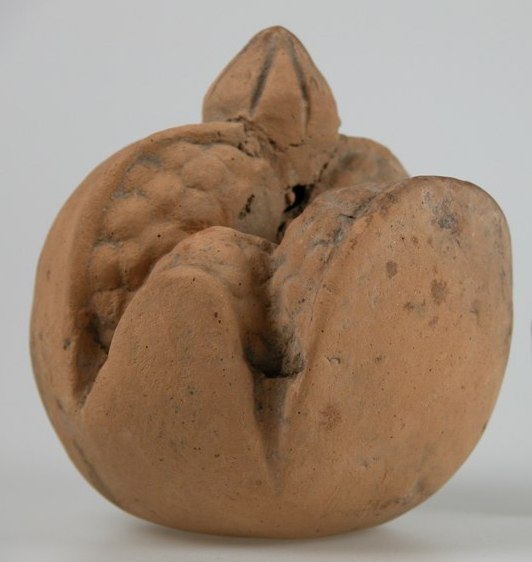

Pomegranate
Terracotta
Cut to show the interior
Reference: 4182
Can be found: Explorers and Collectors
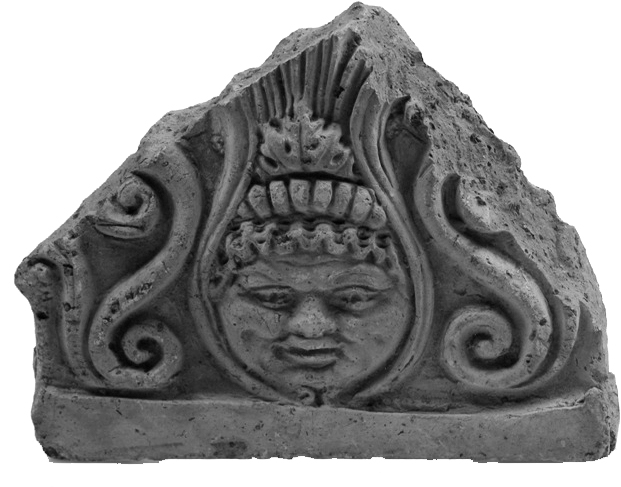

Portion of a terracotta cornice 4th to 1st century BC; found in Rhodes
Earthenware
Building decoration fragment with Grecian honeysuckle and a face.
Presented by Viscount Strangford to Canterbury Philosophical and Literary Institution Museum, 1844, and acquired through purchase of the museum by Canterbury Corporation, 1846-47
Reference: 959
Can be found: Explorers and Collectors
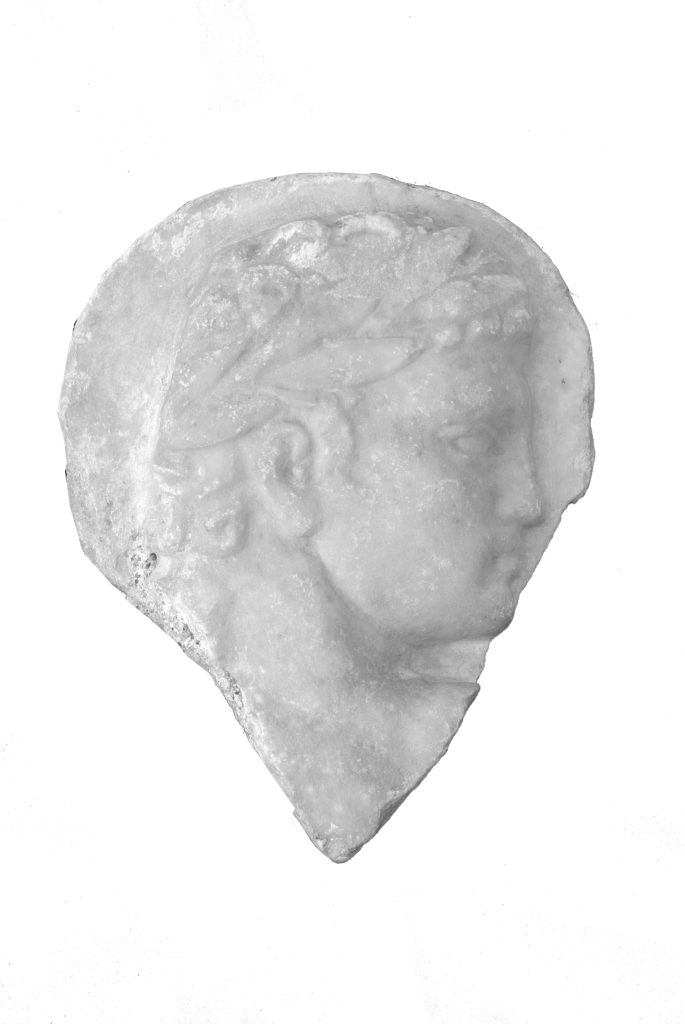

Profile head crowned with laurel Perhaps 5th to 4th century BC; found in Rhodes, 1824
Marble
Laurel leaves are symbolic of victory.
Presented by Viscount Strangford to Canterbury Philosophical and Literary Institution Museum, 1844, and acquired through purchase of the museum by Canterbury Corporation, 1846-47
Reference: 4191
Can be found: Explorers and Collectors
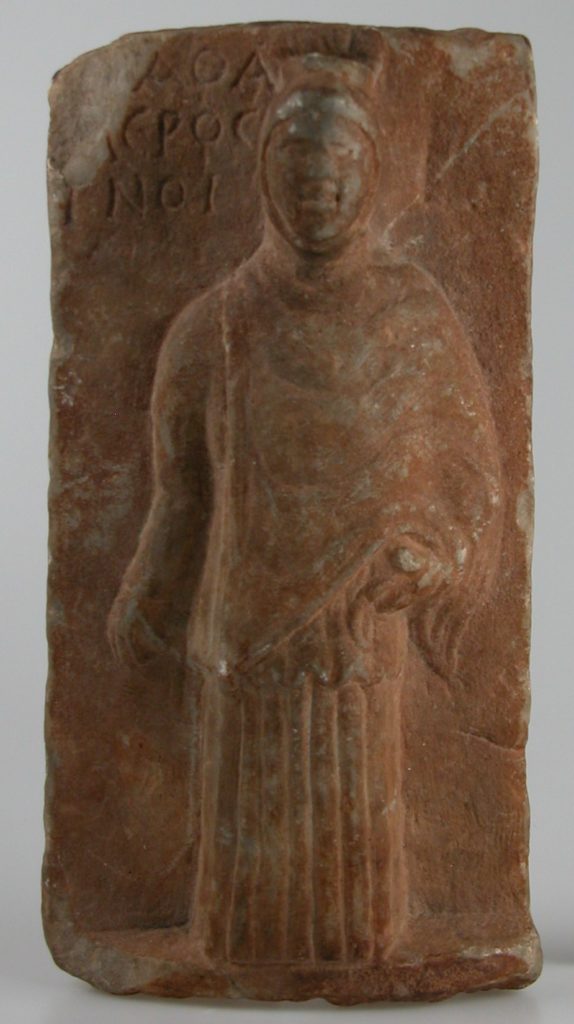

Relief of a woman
Terracotta
Reference: 4190
Can be found: Explorers and Collectors
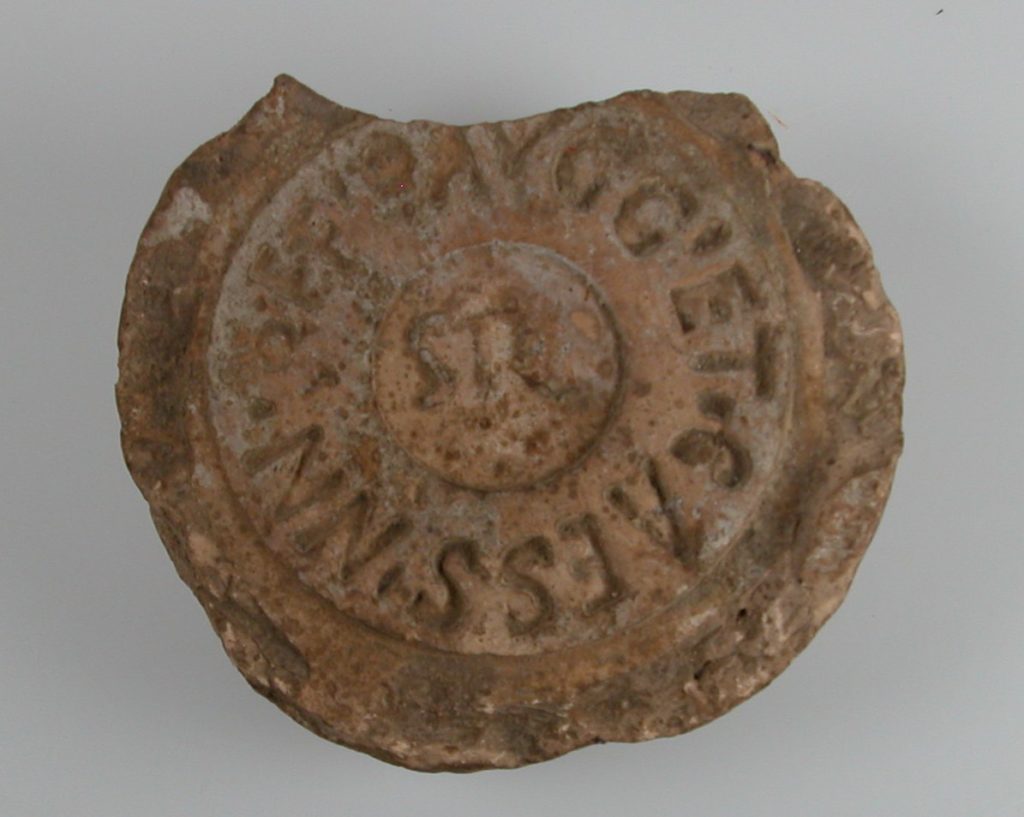

Round tablet with inscription Terracotta
Reference: 4189
Can be found: Explorers and Collectors
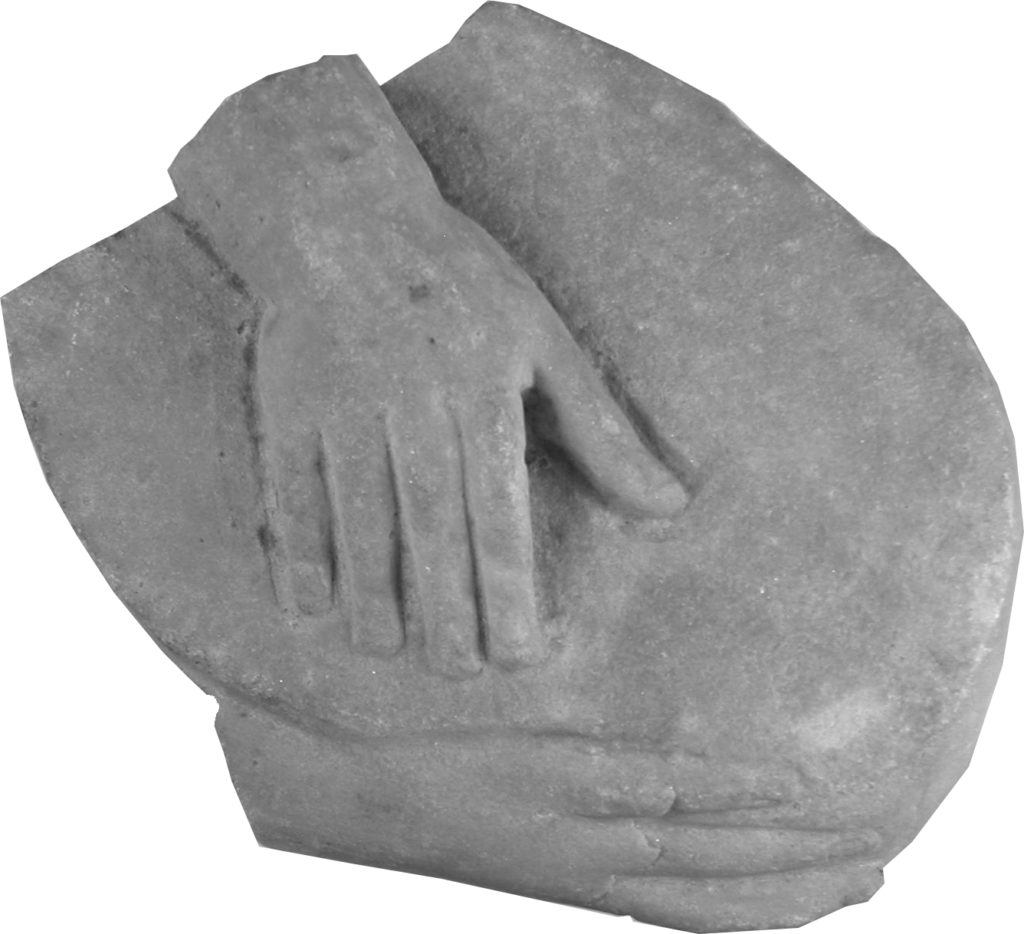

Sculptural fragment with hands holding a disc
Perhaps 5th to 4th century BC; source unknown
Marble
Finely carved and probably from a discus-thrower sculpture.
Presented by Viscount Strangford to Canterbury Philosophical and Literary Institution Museum, 1844, and acquired through purchase of the museum by Canterbury Corporation, 1846-47
Reference: 4264
Can be found: Explorers and Collectors
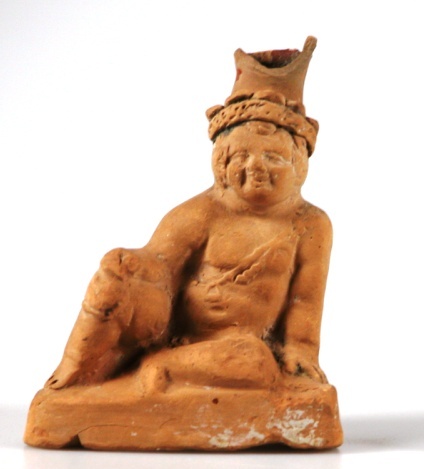

Seated Bacchus
Naxos, 1822
Terracotta
Reference: 4186
Can be found: Explorers and Collectors


Seated figure
Terracotta
Reference: 4181
Can be found: Explorers and Collectors
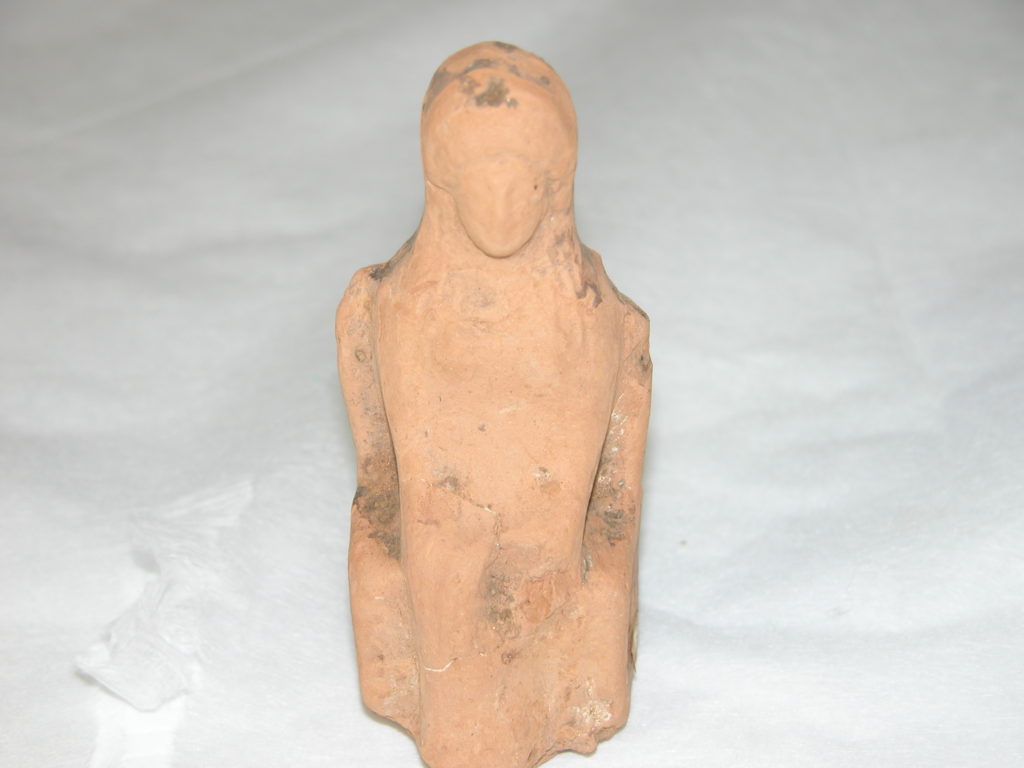

Seated figure Terracotta
Reference: 4174
Can be found: Explorers and Collectors
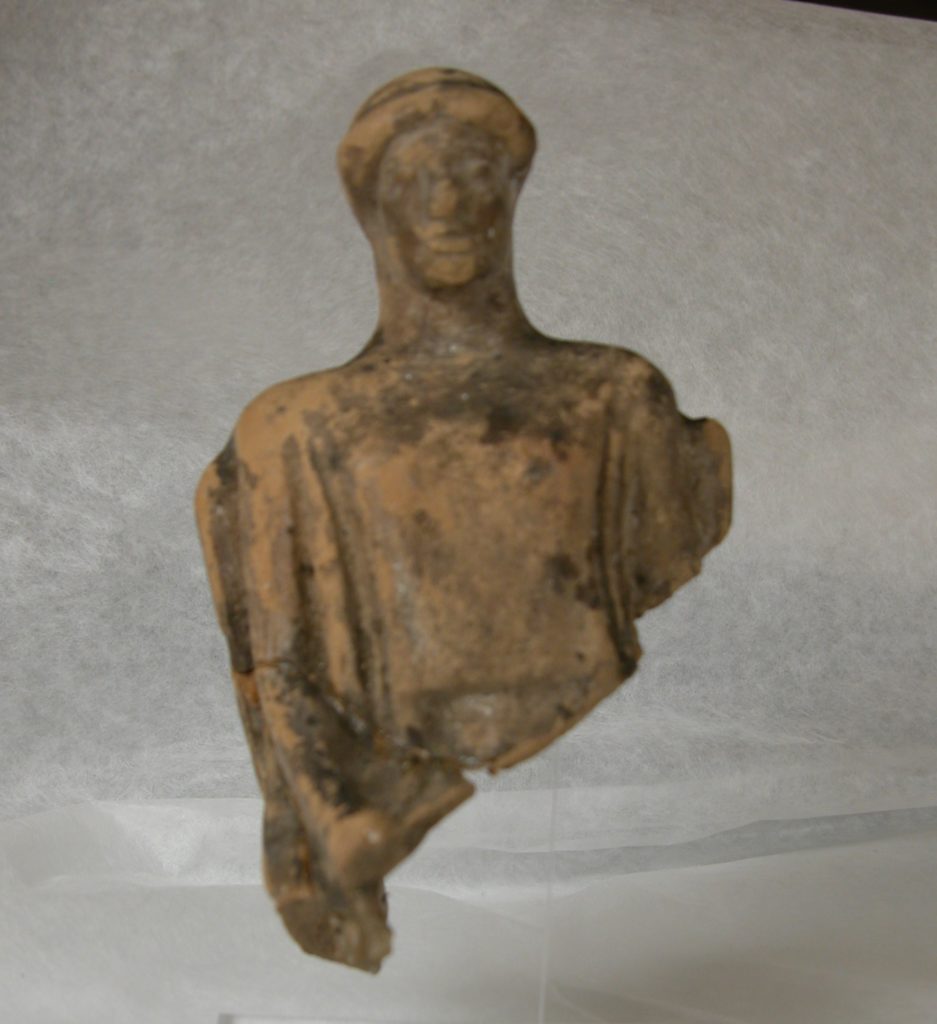

Seated figure with headdress Terracotta
Reference: 960
Can be found: Explorers and Collectors
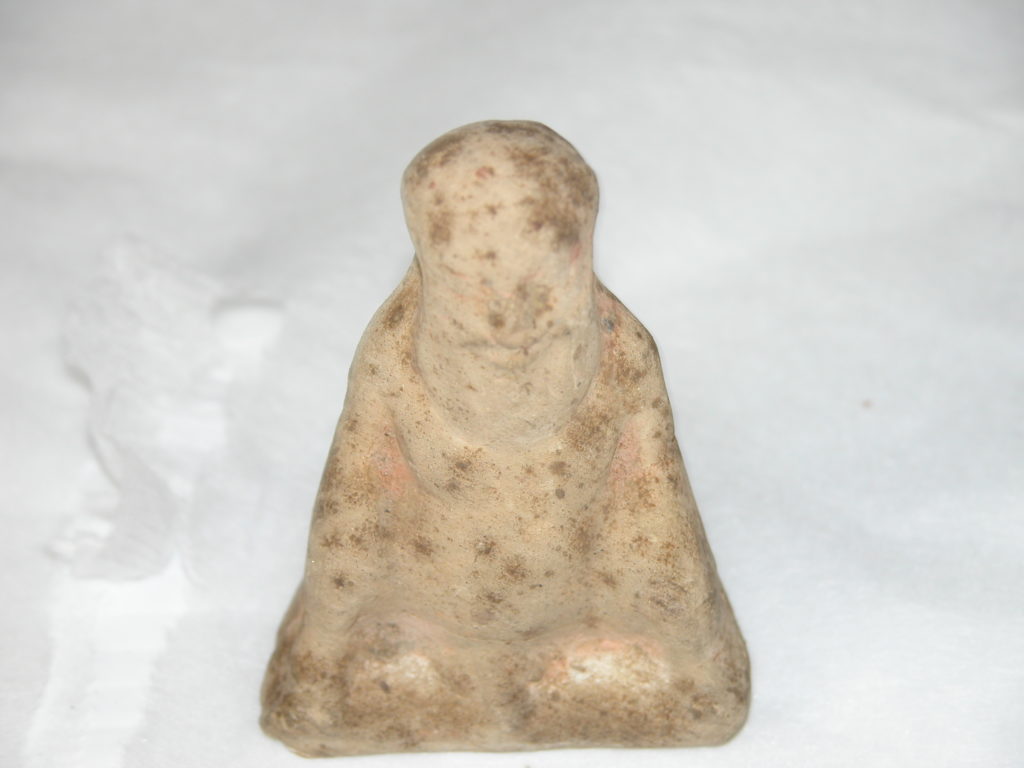

Seated male Terracotta
Reference: 4199
Can be found: Explorers and Collectors
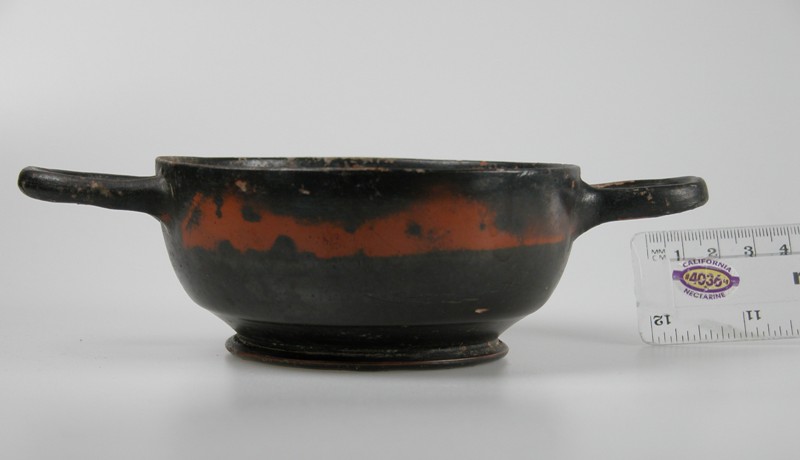

Shallow black and red bowl
Reference: 4157
Can be found: Explorers and Collectors
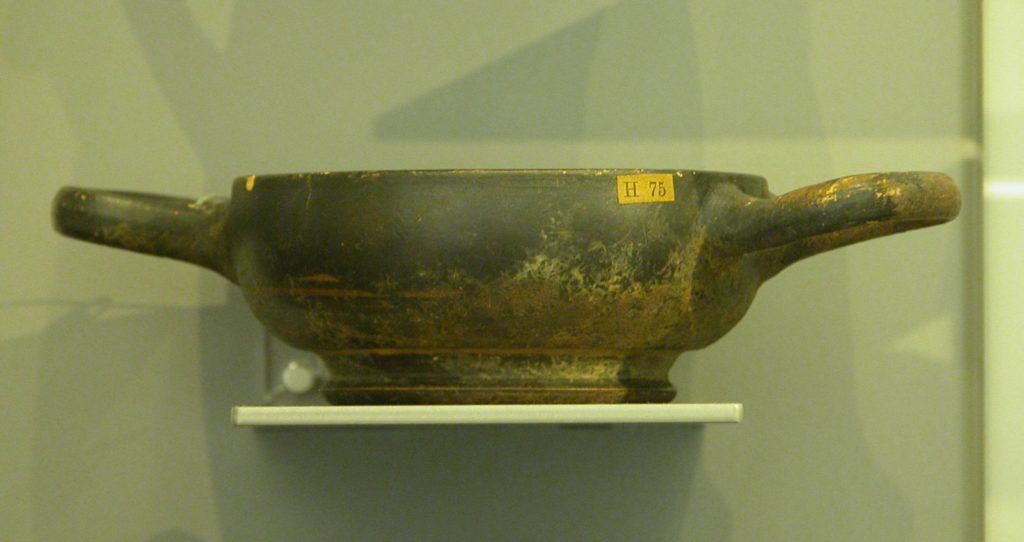

Shallow black bowl
Pattern inside of circular radiations including the branches of a palm or yew.
Reference: 4161
Can be found: Explorers and Collectors
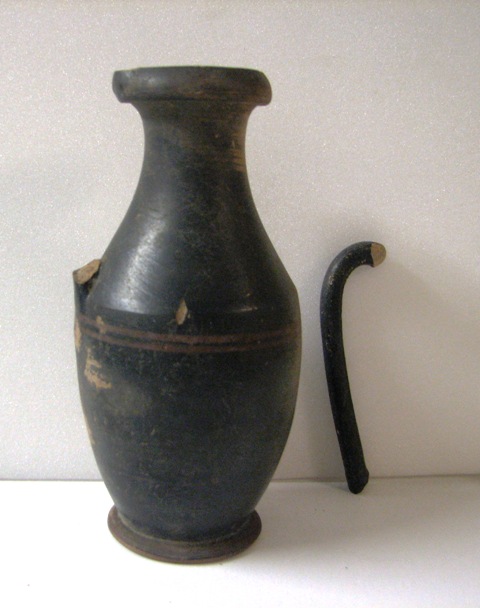

Small black vase
Reference: 4091
Can be found: Explorers and Collectors
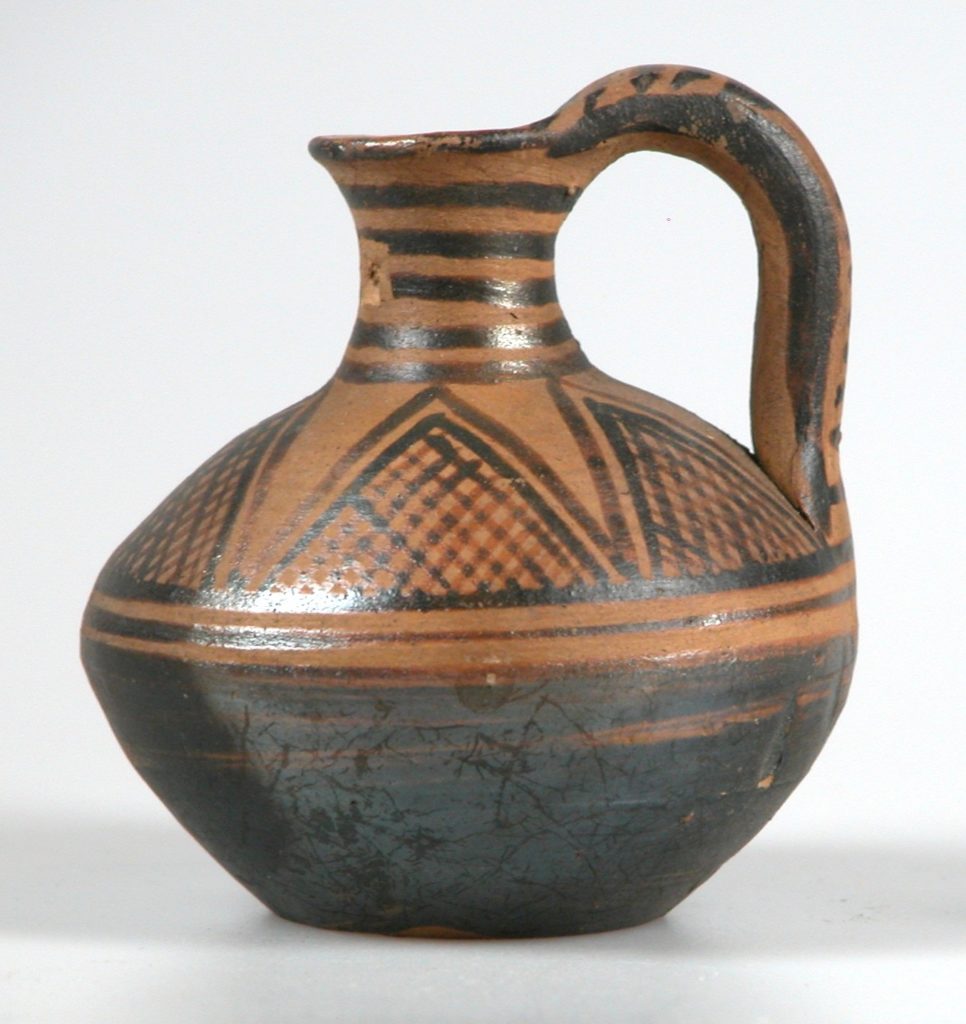

Small red and black globular vase
Reference: 4168
Can be found: Explorers and Collectors
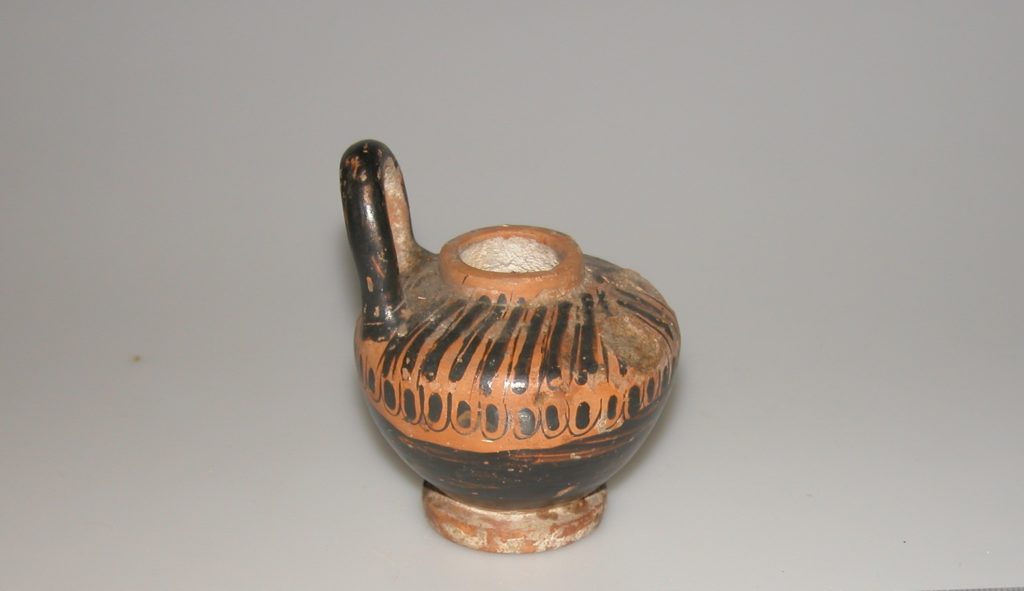

Small urn with arabesque patterns
Reference: 4163
Can be found: Explorers and Collectors


Small vase
1st to 4th century Greek
Earthenware
With heads and birds on the bowl, and the faces of a man and woman across a swan.
Reference: 4162
Can be found: Explorers and Collectors






Small vase
Reference: 4170
Can be found: Explorers and Collectors


Small vase with honeysuckle design
Reference: 4122
Can be found: Explorers and Collectors


Small vase with honeysuckle design
Reference: 4166
Can be found: Explorers and Collectors


Small vase with horizontal grooves
Reference: 4169
Can be found: Explorers and Collectors





Small vessels
4th to 2nd century BC Greek and 1st to 2nd century AD Roman
Earthenware
Small flasks and jugs used for toilet oil, perfume and condiments. The colours were achieved by covering parts of the clay pots with slip (diluted clay solution). The iron oxide naturally present in the clay turned from red to black, or back to red, depending on fi ring conditions. Further pigments could be added to the slip.
Presented by Viscount Strangford to Canterbury Philosophical and Literary Institution Museum, 1844, and acquired through purchase of the museum by Canterbury Corporation, 1846-47
Reference: CANCM:nn
Can be found: Explorers and Collectors


Spouted black vessel
May be a child’s feeding pot.
Reference: 4093
Can be found: Explorers and Collectors
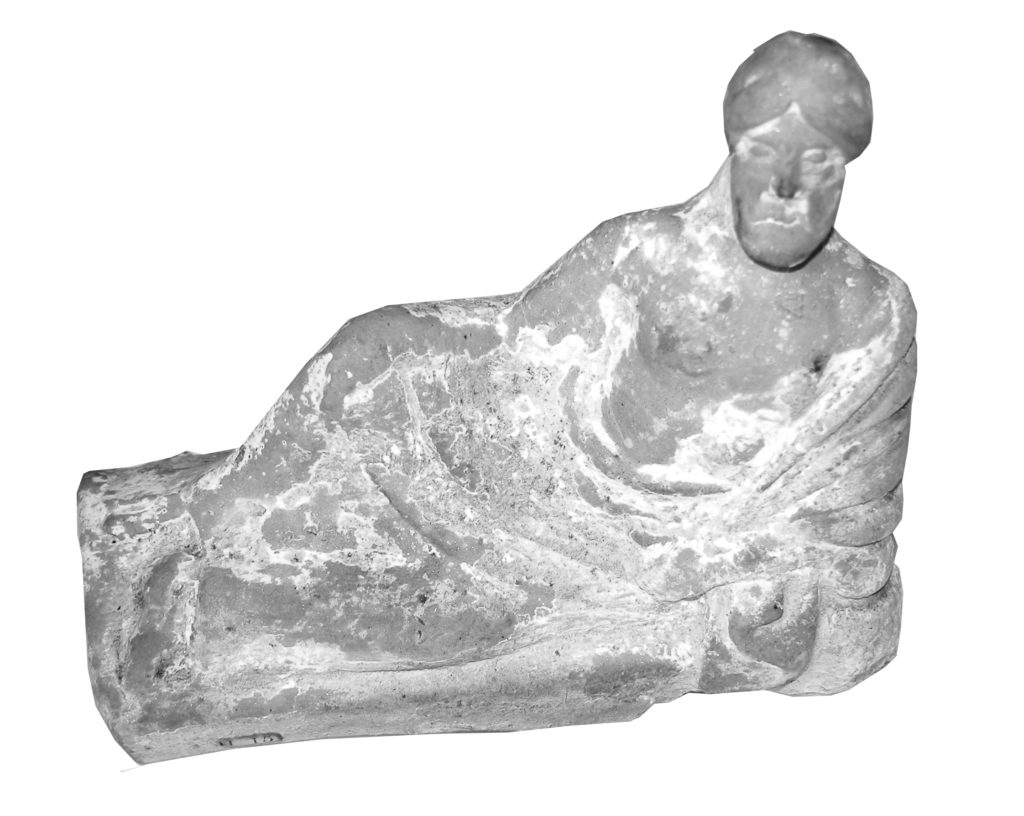

Terracotta reclining male figure 3rd to 1st century BC; found at Athens in 1821.
Earthenware
There are traces of red paint on the terracotta.
Presented by Viscount Strangford to Canterbury Philosophical and Literary Institution Museum, 1844, and acquired through purchase of the museum by Canterbury Corporation, 1846-47
Reference: 4175
Can be found: Explorers and Collectors





Terracotta sculptures and stone fragments
3rd to 1st century BC; found in Greece and Turkey
Earthenware and stone
Figures sculpted in baked clay – terracotta – were very popular. Some may have been used for funerary or religious ritual, others for decoration or amusement. The seated figure of Dionysus (Bacchus) is a wine pitcher, his headdress the spout. Other terracottas include a wolf’s head, a pomegranate, and a pig and bird, probably toys. The round terracotta tablet, of unknown purpose, is inscribed ‘Augustus and Caesar’, with the maker’s initials ‘SR’.
The partial foot of a marble sculpture, with sandal thongs imitating creepers, was found at Athens, the hand with scroll at Adrianople (modern Edirne), Turkey.
Presented by Viscount Strangford to Canterbury Philosophical and Literary Institution Museum, 1844, and acquired through purchase of the museum by Canterbury Corporation, 1846-47
Presented by Viscount Strangford to Canterbury Philosophical and Literary Institution Museum, 1844, and acquired through purchase of the museum by Canterbury Corporation, 1846-47
Reference: CANCM:nn
Can be found: Explorers and Collectors
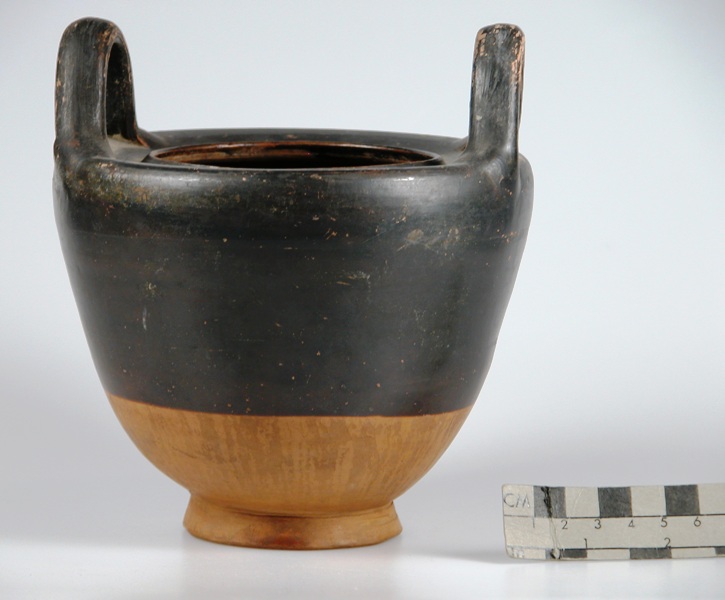

Two-handled vase
Reference: 4089
Can be found: Explorers and Collectors
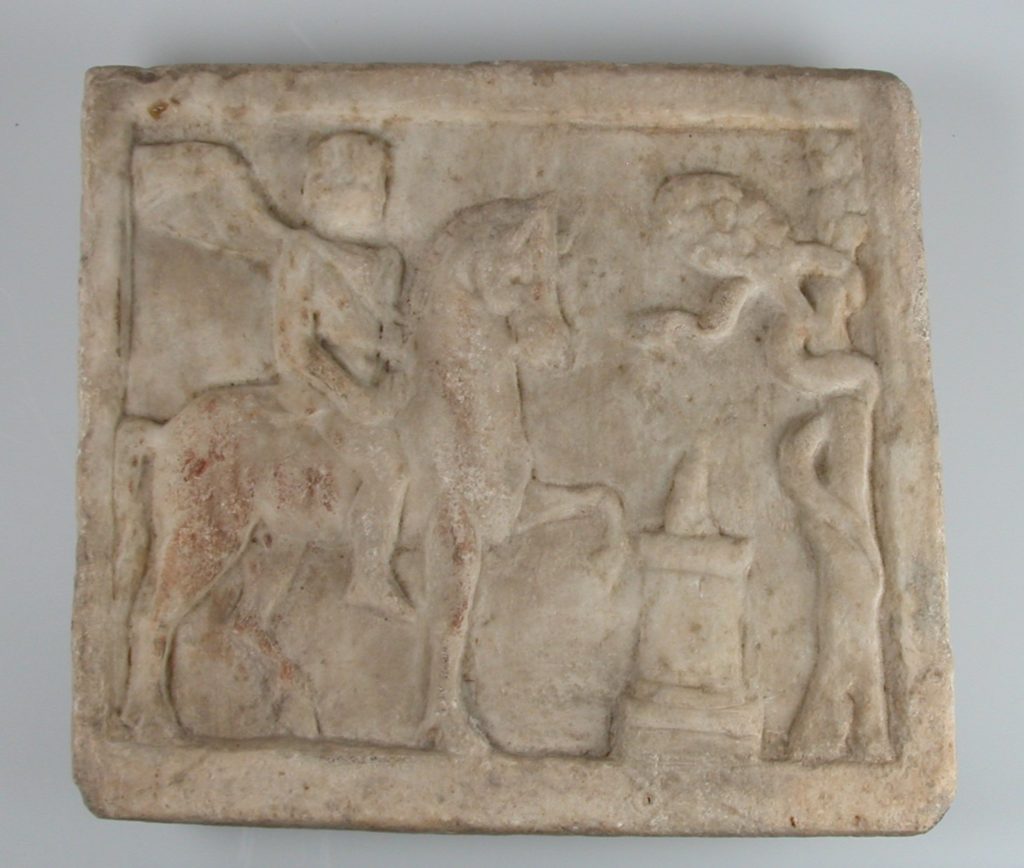

Unknown date; found at Brusa (now Bursa)
Turkey Stone
This square marble relief shows one of the labours of Hercules, who was tasked with stealing apples from the Garden of the Hesperides, guarded by a serpent. Hercules tricked Atlas into doing the task. The latter’s cloak is shown flowing behind to suggest speed.
Presented by Viscount Strangford to Canterbury Philosophical and Literary Institution Museum, 1844, and acquired through purchase of the museum by Canterbury Corporation, 1846-47
Reference: 4267
Can be found: Explorers and Collectors
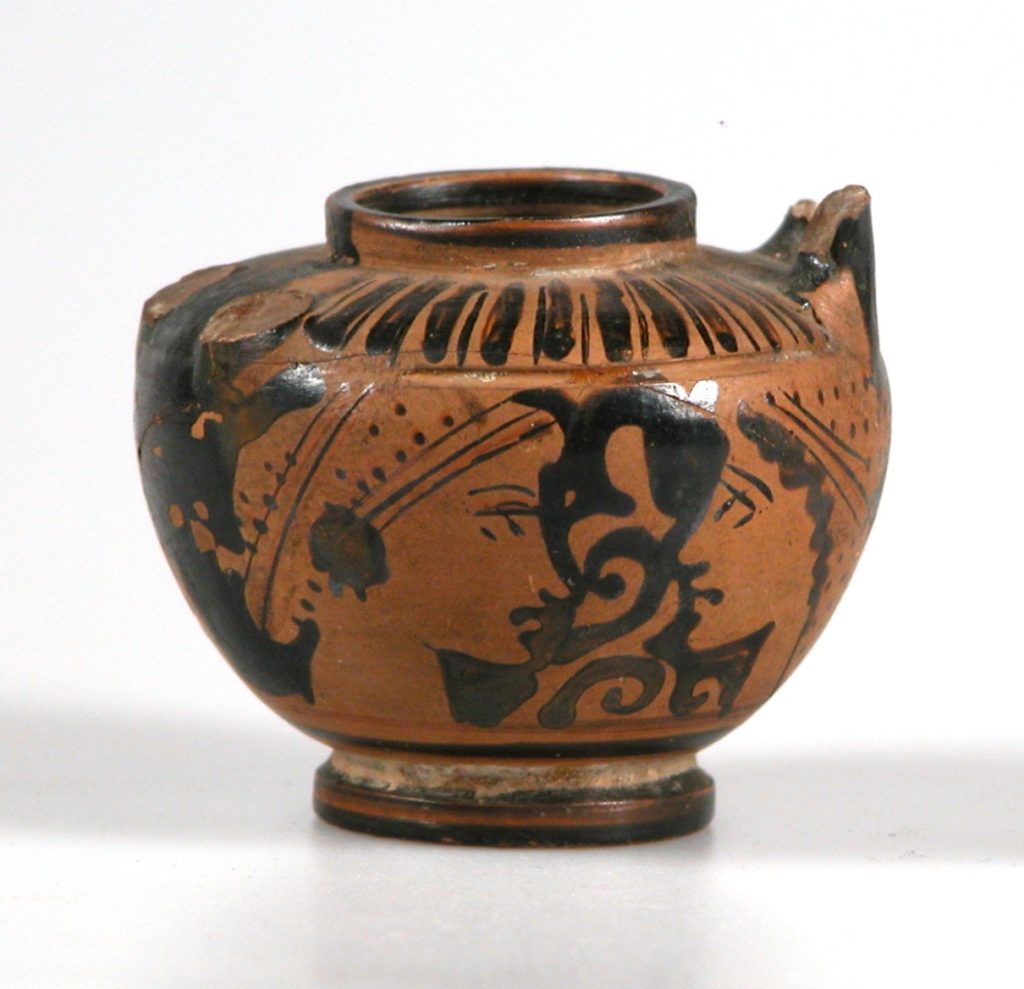

Urn with two female heads facing one another
Reference: 4165
Can be found: Explorers and Collectors
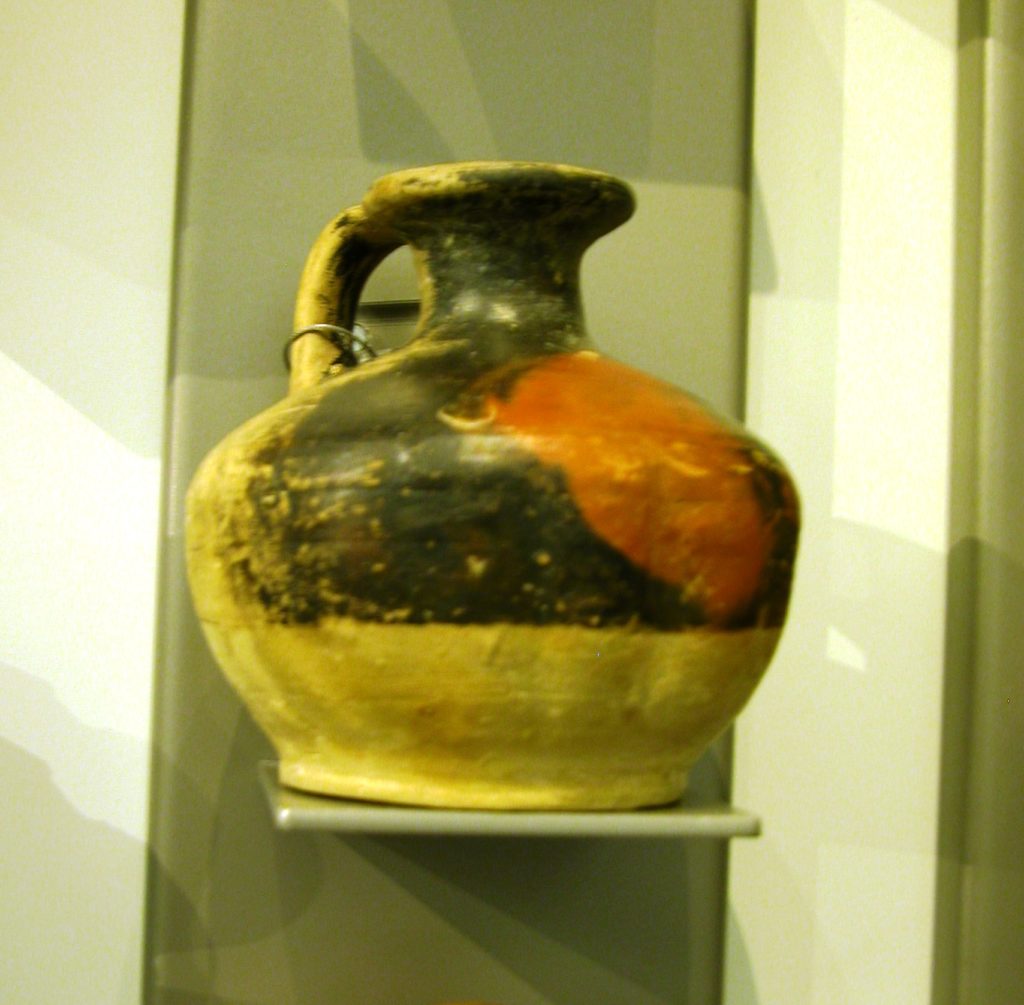

Vase
Reference: 4238
Can be found: Explorers and Collectors


Vase
With four figures, the two central ones fighting
Reference: 4119
Can be found: Explorers and Collectors


Vase
Reference: 4111
Can be found: Explorers and Collectors


Vase with diamond pattern
Reference: 4230
Can be found: Explorers and Collectors
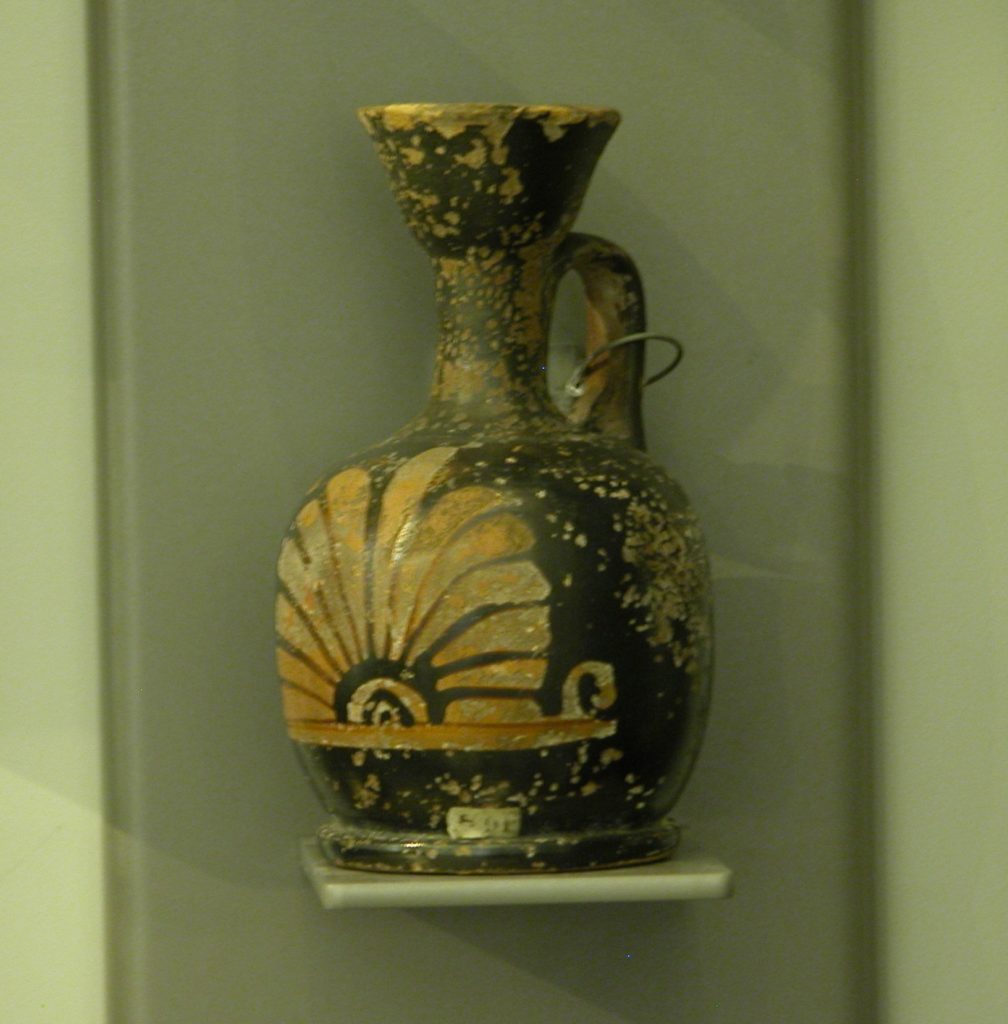

Vase with honeysuckle design
Reference: 4115
Can be found: Explorers and Collectors


Vase with honeysuckle design
Reference: 4224
Can be found: Explorers and Collectors
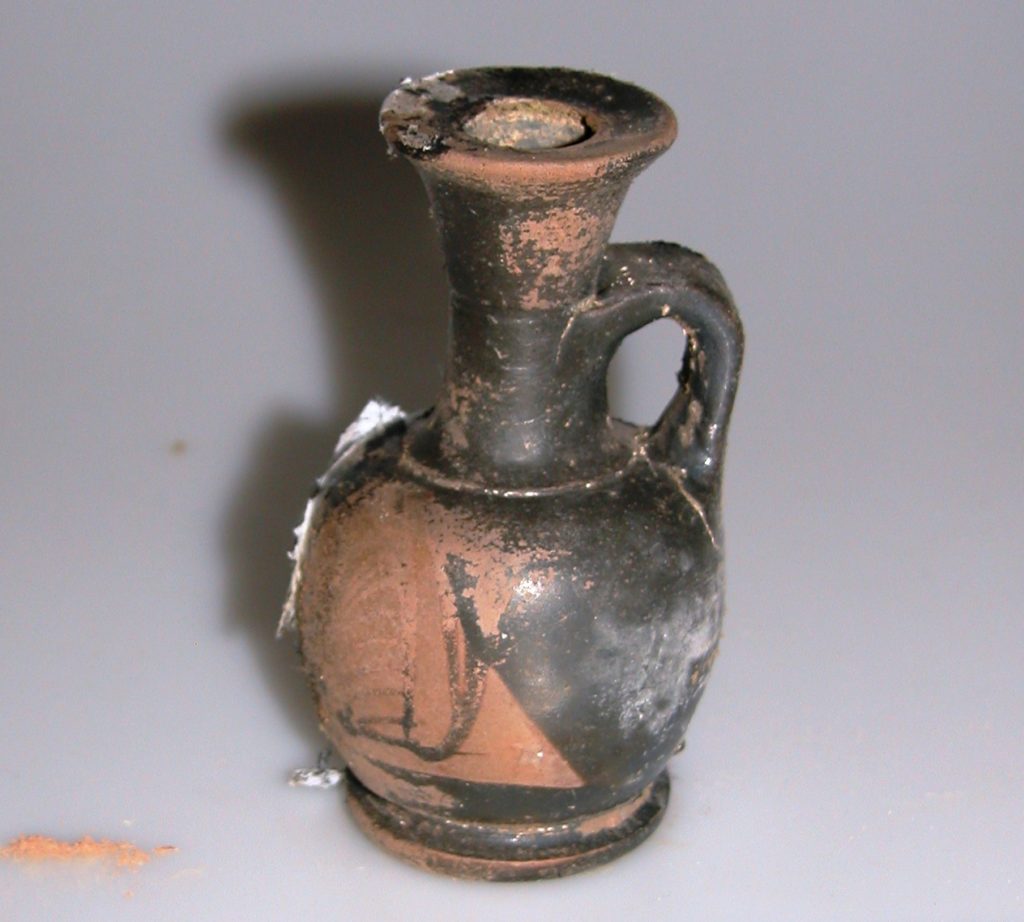

Vase with honeysuckle design
Reference: 4117
Can be found: Explorers and Collectors
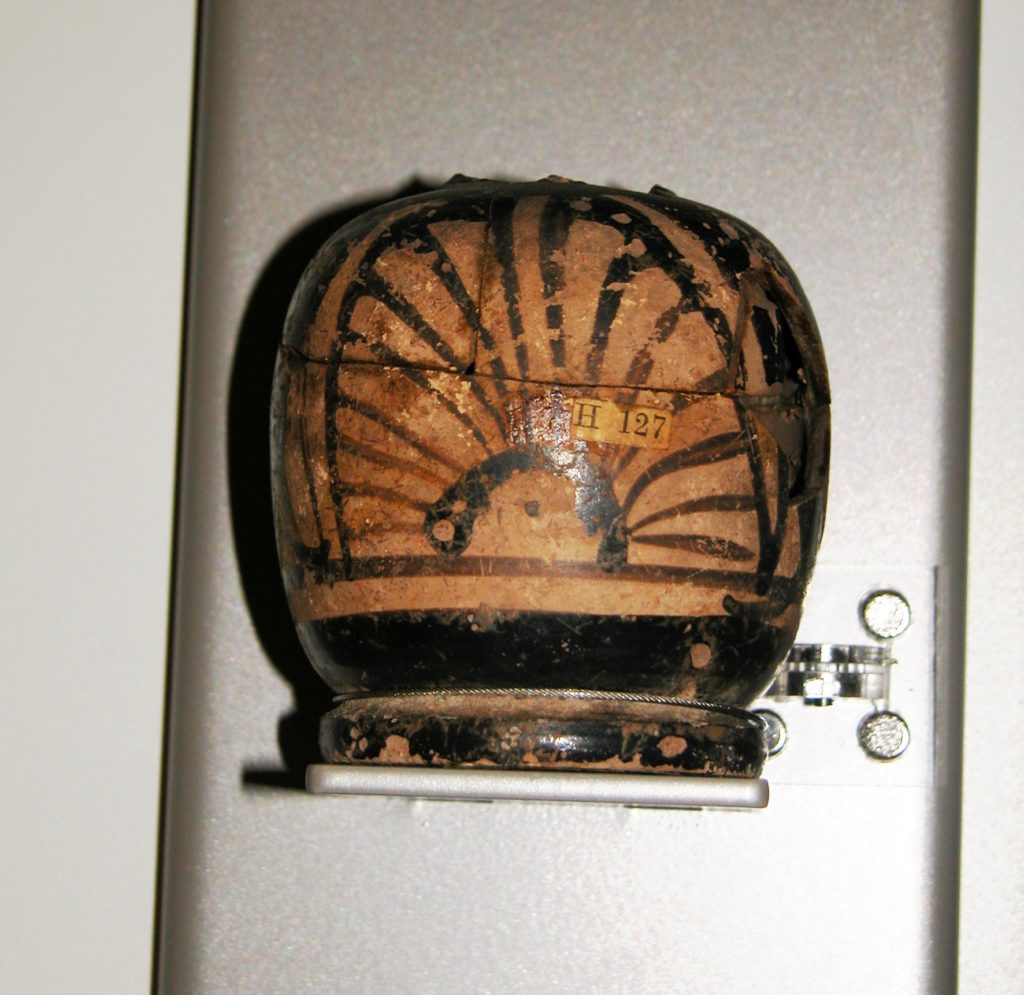

Vase with honeysuckle design From Megara
Reference: 4110
Can be found: Explorers and Collectors
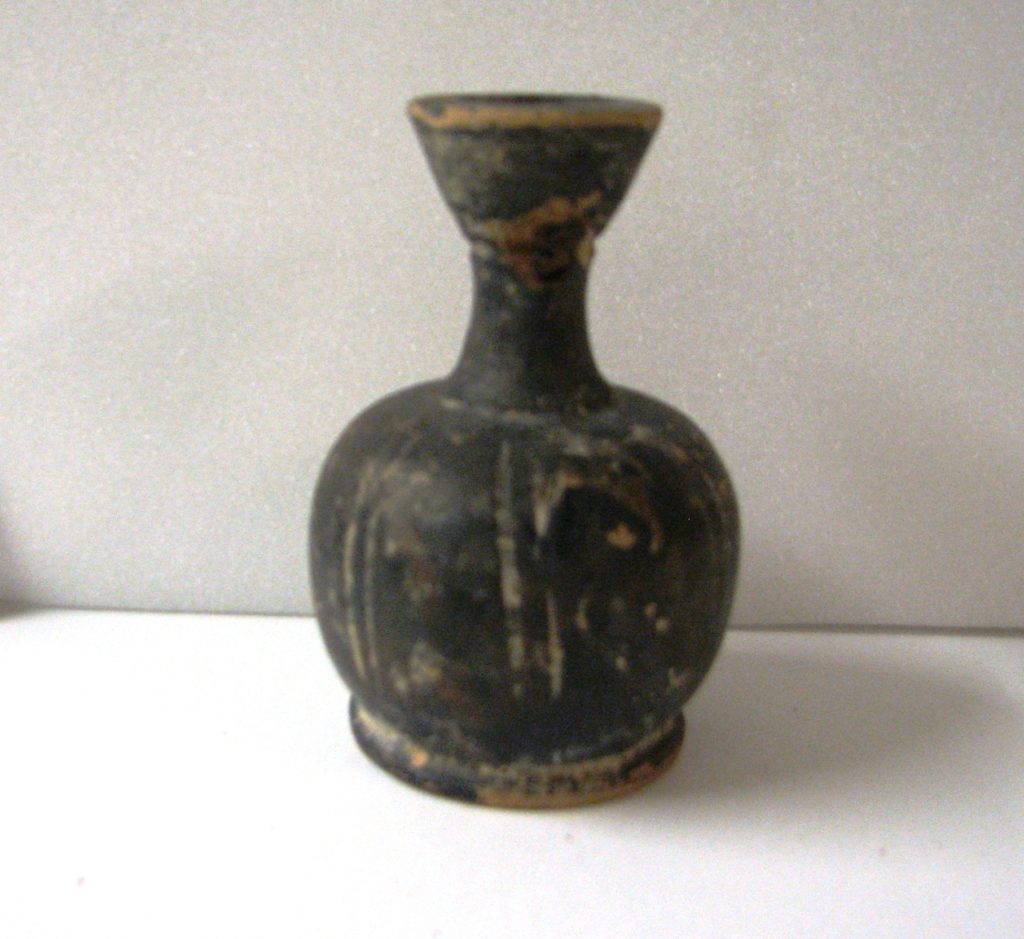

Vase with longitudinal furrows
Reference: 4232
Can be found: Explorers and Collectors
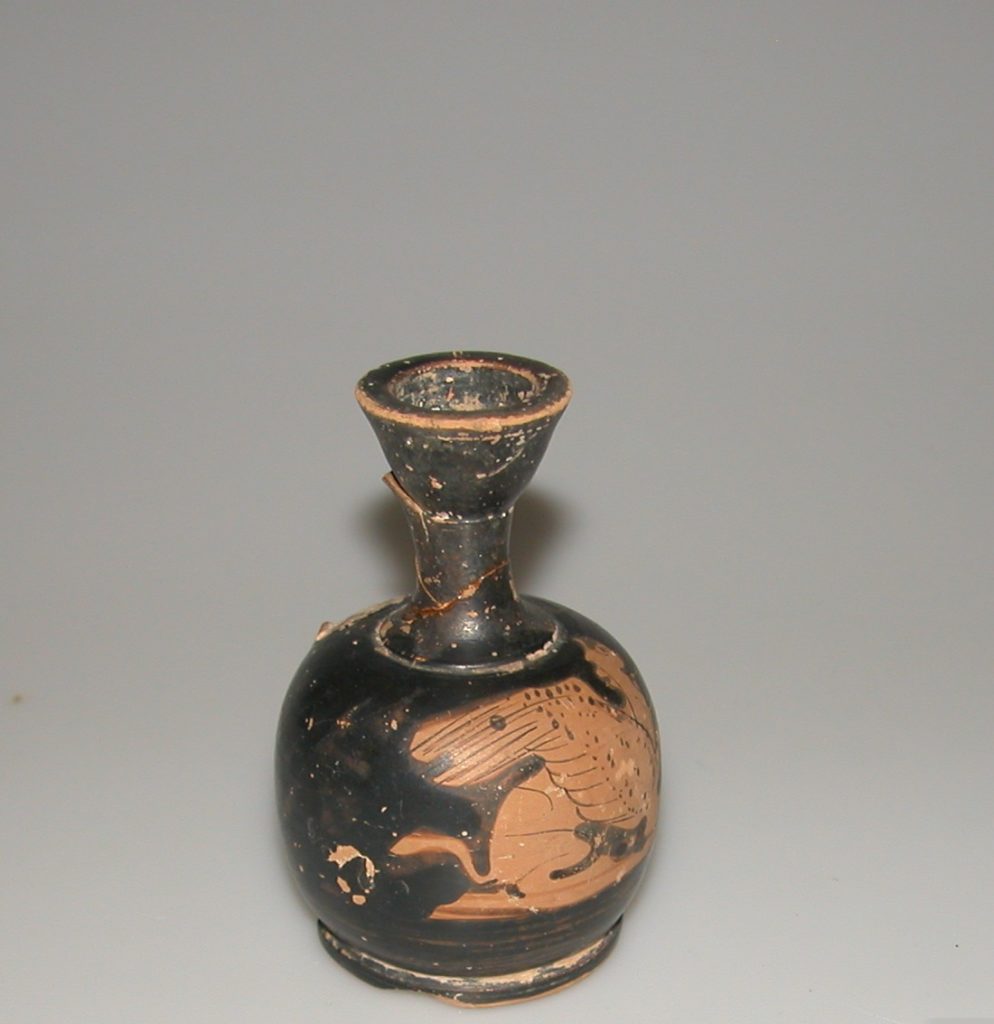

Vase with winged horse lying down
Reference: 4229
Can be found: Explorers and Collectors


Wolf’s head
Terracotta
Reference: 4223
Can be found: Explorers and Collectors





‘Lekythos’ and other vessels
5th to 2nd century BC; found in Greece and Turkey
Earthenware
Ancient Greek pottery is predominantly red and black. The colours were achieved by covering parts of the clay pots with slip (diluted clay solution) and firing at different temperatures. Early decoration was black-on-red, succeeded from about 500 BC by red-on-black. Several pots are made in the tall, slim Lekythos shape particular to Athens.
The decoration includes images of a charioteer driving quadriga (four-horse chariot) and a Nike (winged victory) pouring a libation (liquid offering) at an altar. The small black spouted vessel may be a child’s feeding pot.
Presented by Viscount Strangford to Canterbury Philosophical and Literary Institution Museum, 1844, and acquired through purchase of the museum by Canterbury Corporation, 1846-47
Reference: CANCM:nn
Can be found: Explorers and Collectors


‘Lekythos’ vase
5th century BC; found at Athens in 1811 (mouth found separately in 1821)
Earthenware
The Lekythos is a type of tall vase particular to ancient Athens. It contained oil for funerary offerings.
The image shows a crucial moment in the story of mythological hero Agamemnon. He had returned from years of war in Troy to find his wife, Clytemnestra, was having an affair with his cousin Aigisthus. The adulterous pair murdered Agamemnon and neglected to observe correct funeral rites. Agamemnon’s daughter, Electra, sent her younger brother, Orestes, to safety. Years later he returned, and the two met and recognised one another at their father’s tomb (represented by the column). They planned how to avenge his death.
Presented by Viscount Strangford to Canterbury Philosophical and Literary Institution Museum, 1844, and acquired through purchase of the museum by Canterbury Corporation, 1846-47
Reference: 4105
Can be found: Explorers and Collectors
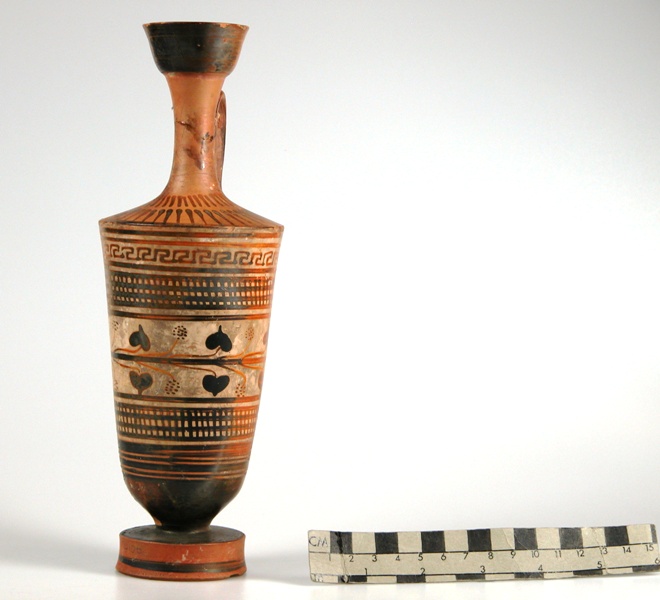

‘Lekythos’ vase
5th to 2nd century BC; found in Greece or Turkey
Earthenware
The Lekythos is a type of tall vase particular to ancient Athens. It contained oil for funerary offerings. The colours were achieved by covering parts of the clay pots with slip (diluted clay solution). Iron oxide naturally present in the clay turned from red to black, or back to red, depending on firing conditions. Further pigments could be added to the slip. This example has leaf patterns.
Presented by Viscount Strangford to Canterbury Philosophical and Literary Institution Museum, 1844, and acquired through purchase of the museum by Canterbury Corporation, 1846-47
Reference: 4106
Can be found: Explorers and Collectors
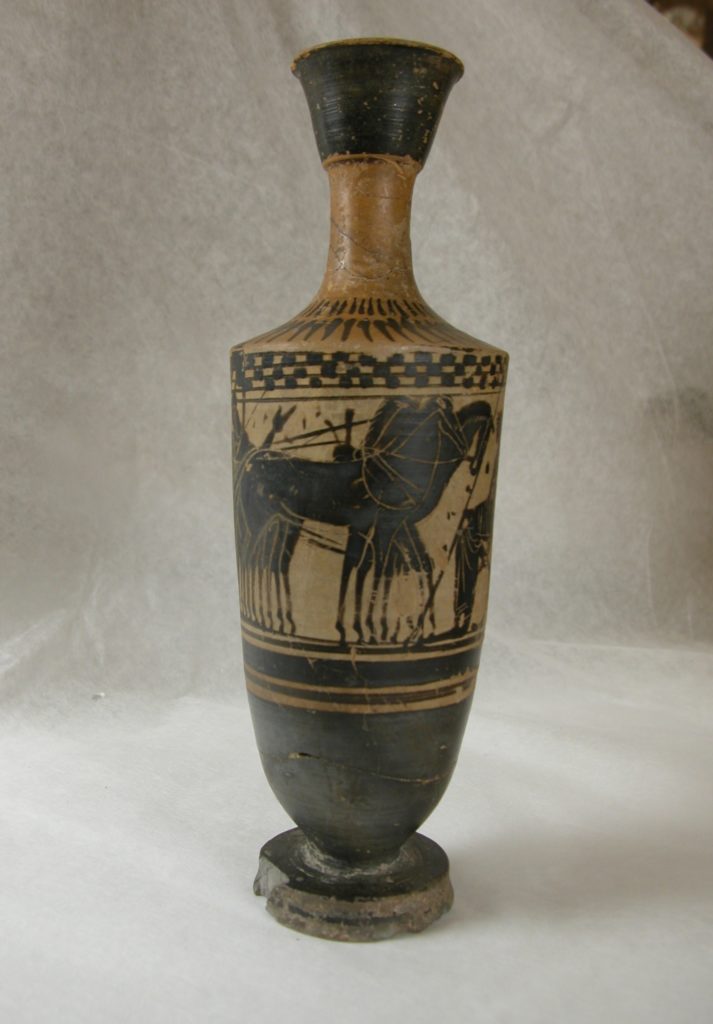

‘Lekythos’ vase
5th to 2nd century BC; found in Greece or Turkey
Earthenware
The Lekythos is a type of tall vase particular to ancient Athens. It contained oil for funerary offerings. The colours were achieved by covering parts of the clay pots with slip (diluted clay solution). Iron oxide naturally present in the clay turned from red to black, or back to red, depending on firing conditions. Further pigments could be added to the slip.
Black-on-red decoration was favoured initially, like this example with charioteer driving a quadriga (four-horse chariot).
Presented by Viscount Strangford to Canterbury Philosophical and Literary Institution Museum, 1844, and acquired through purchase of the museum by Canterbury Corporation, 1846-47
Reference: 4151
Can be found: Explorers and Collectors
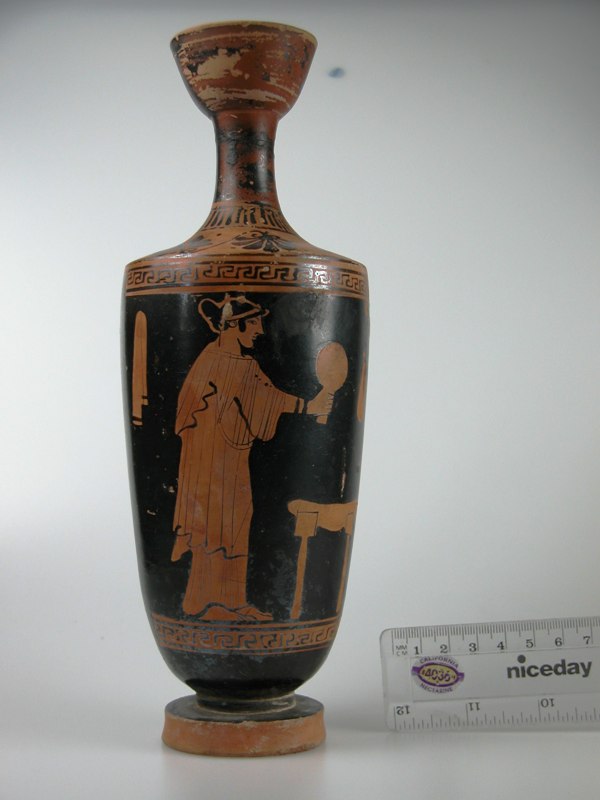

‘Lekythos’ vase
5th to 2nd century BC; found in Greece or Turkey
Earthenware
The Lekythos is a type of tall vase particular to ancient Athens. It contained oil for funerary offerings. The colours were achieved by covering parts of the clay pots with slip (diluted clay solution). Iron oxide naturally present in the clay turned from red to black, or back to red, depending on firing conditions. Further pigments could be added to the slip.
Black-on-red decoration was favoured initially. From about 500 BC red-on-black predominated like this example depicting a woman holding a mirror.
Presented by Viscount Strangford to Canterbury Philosophical and Literary Institution Museum, 1844, and acquired through purchase of the museum by Canterbury Corporation, 1846-47
Reference: 4149
Can be found: Explorers and Collectors

